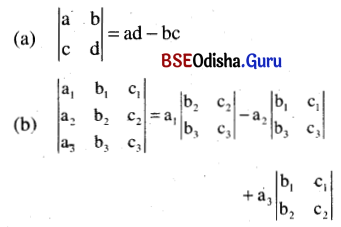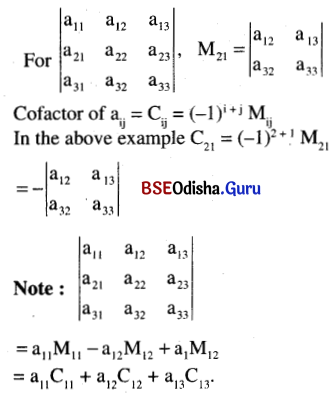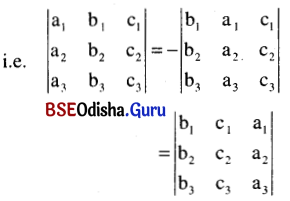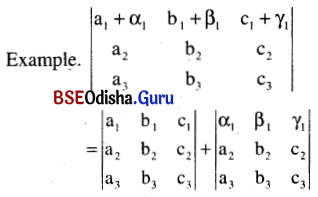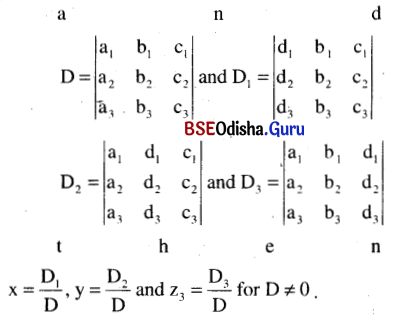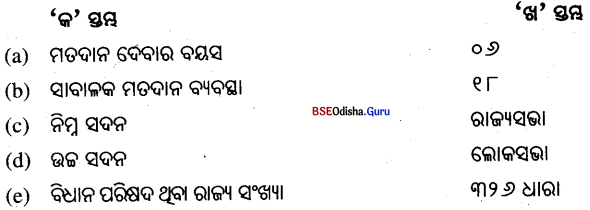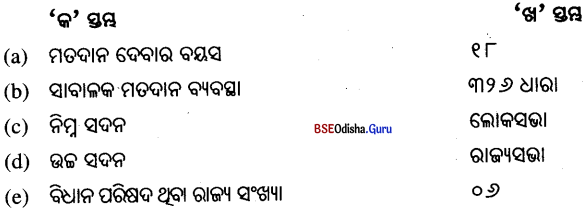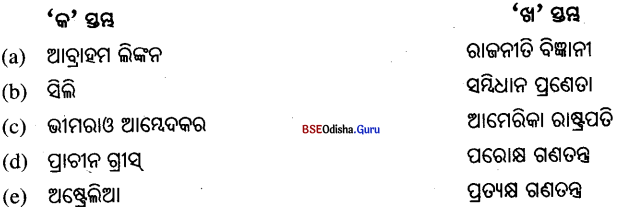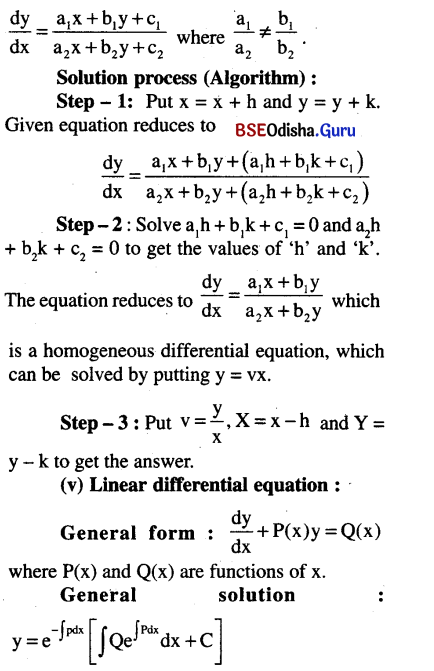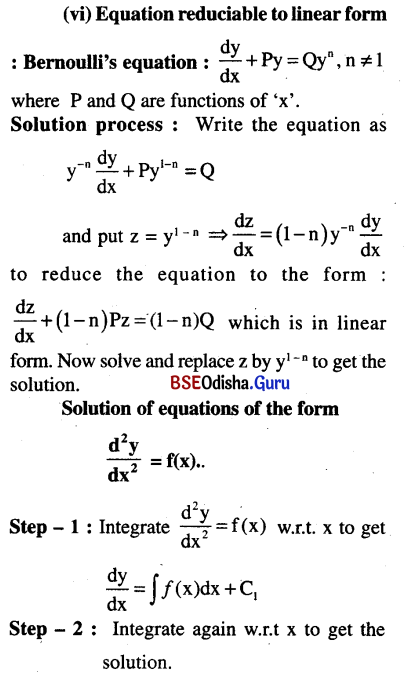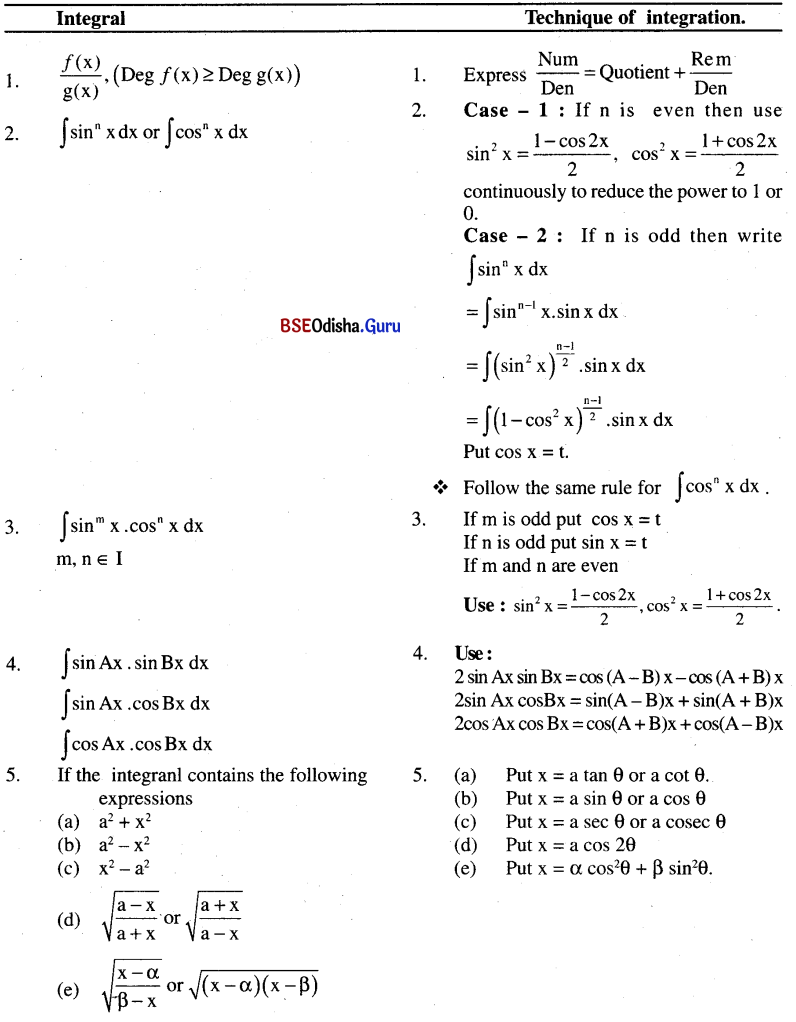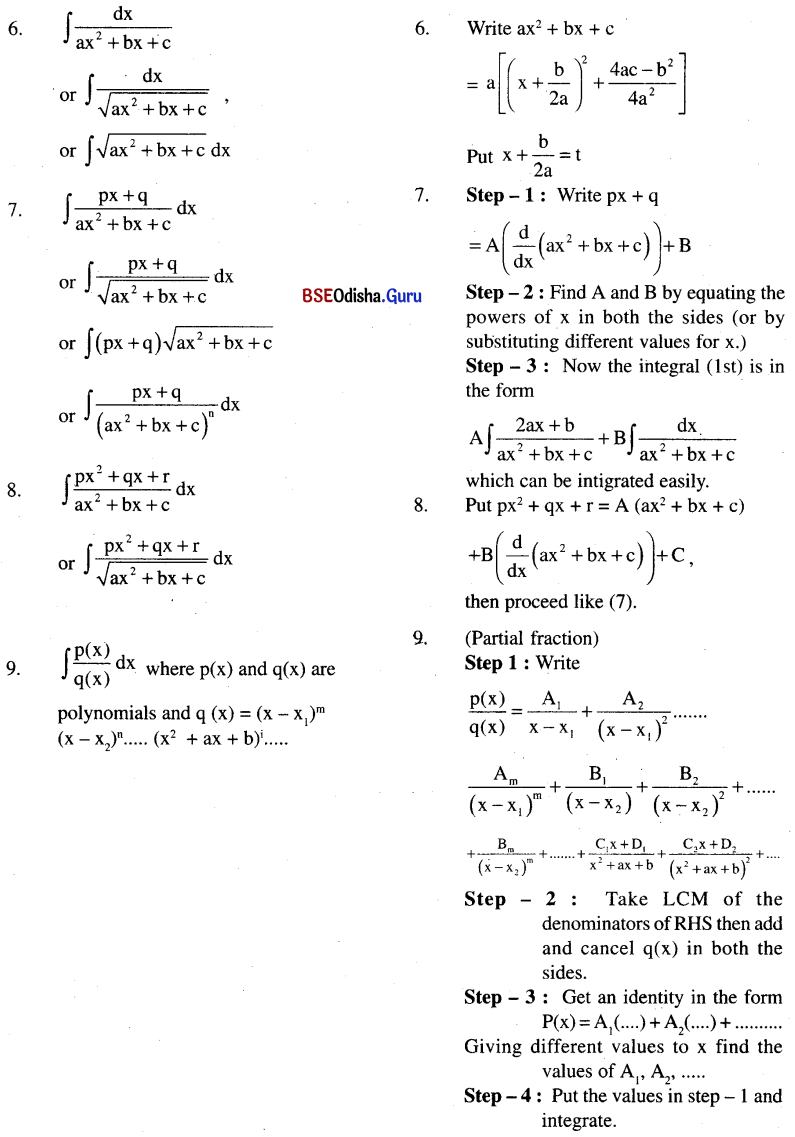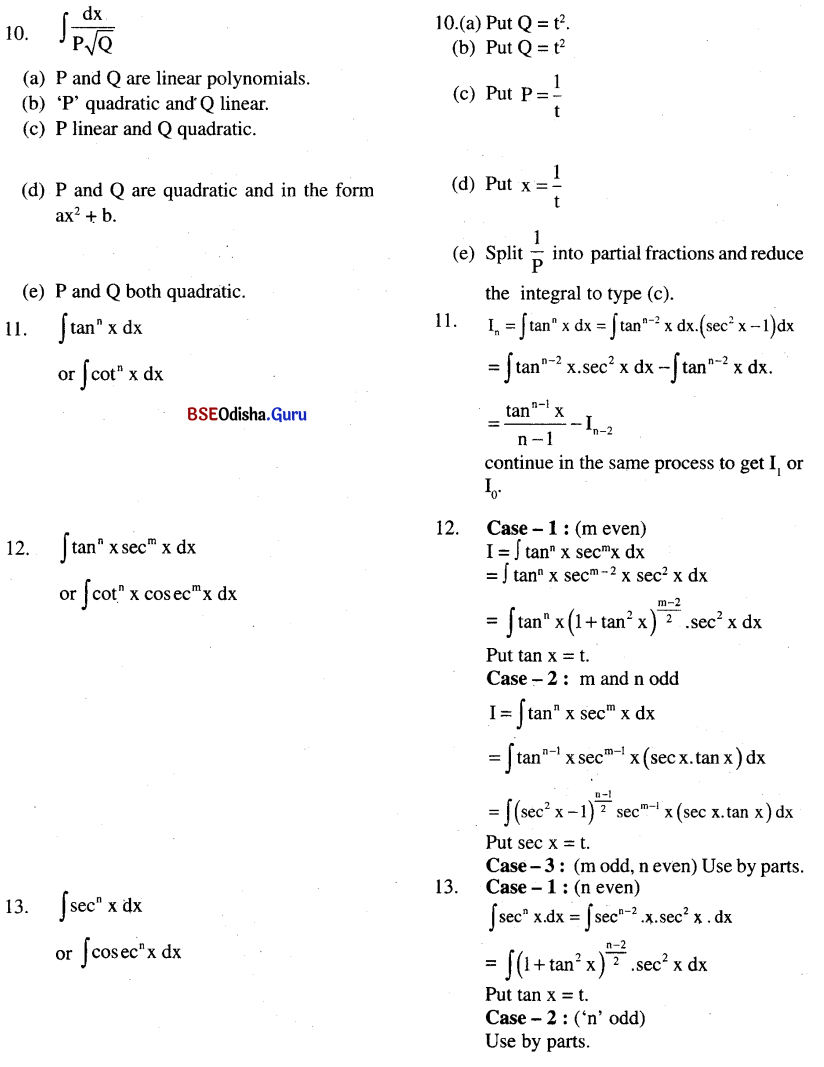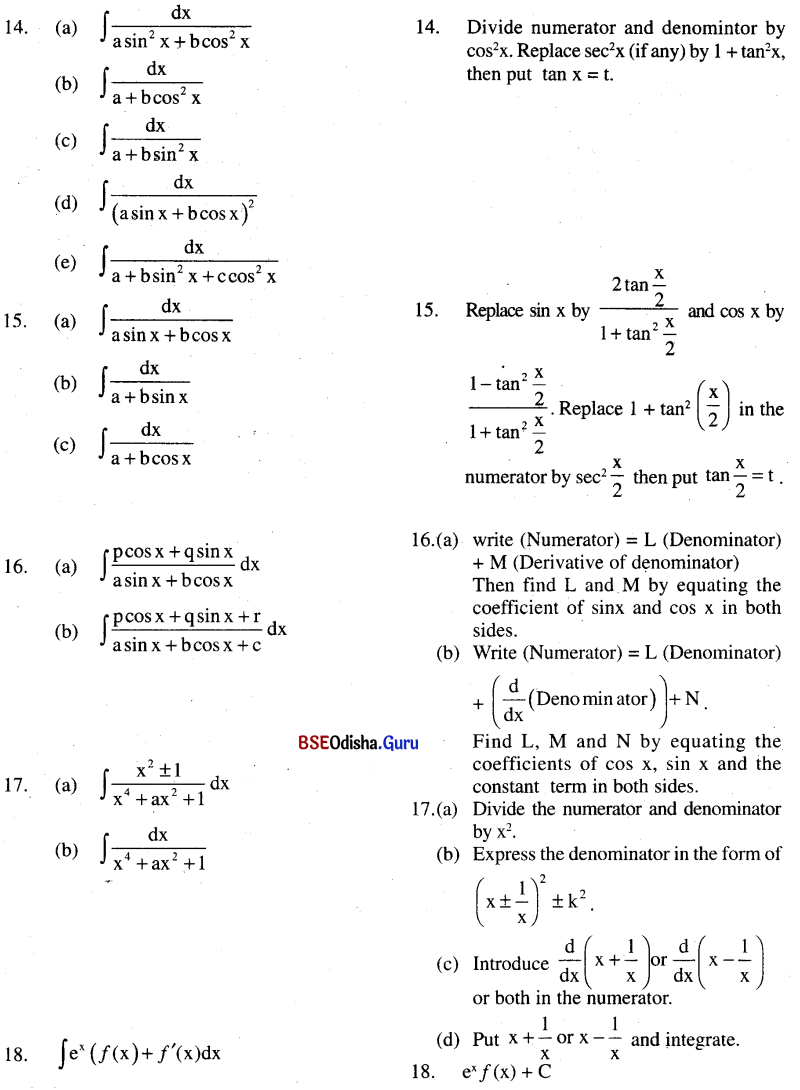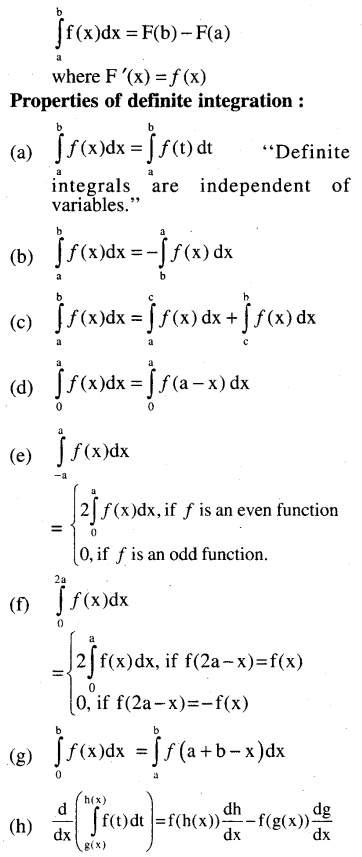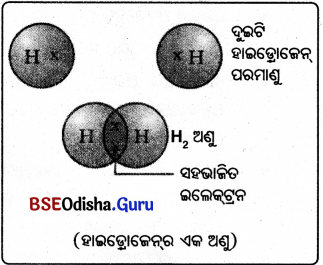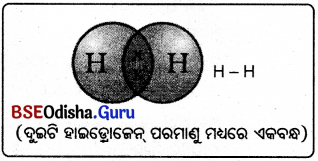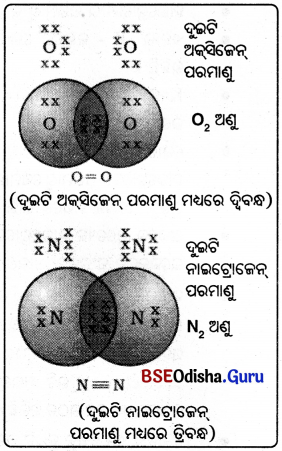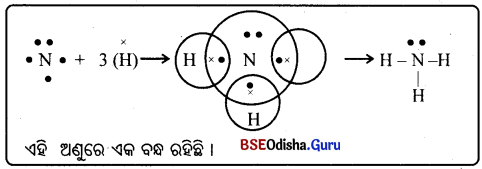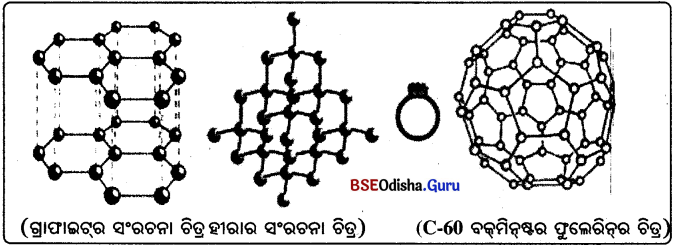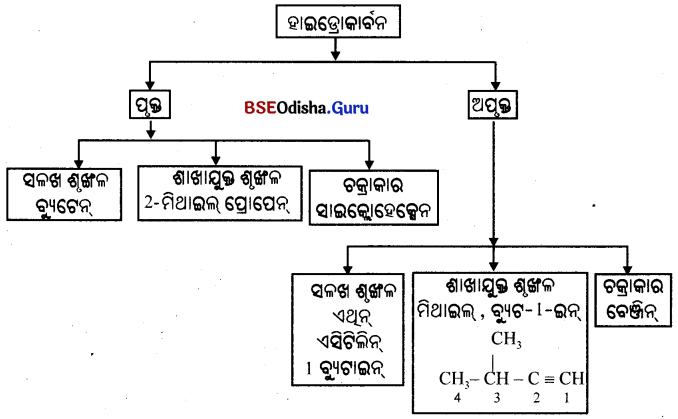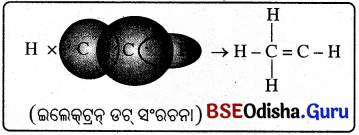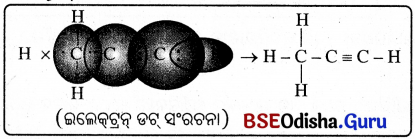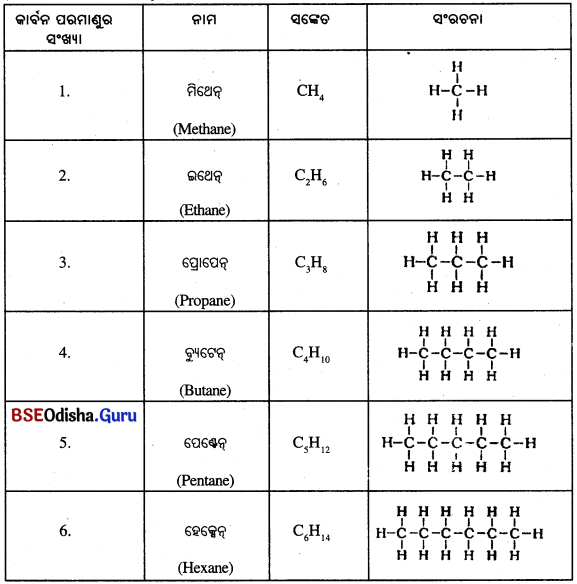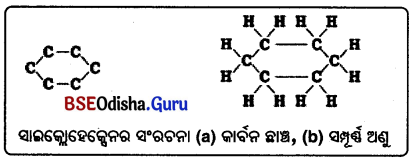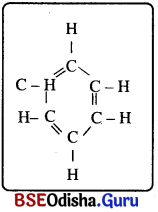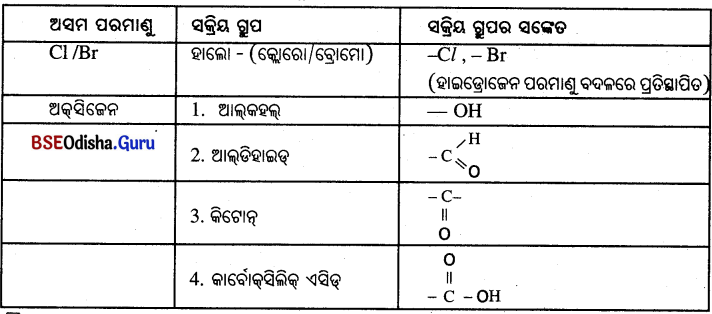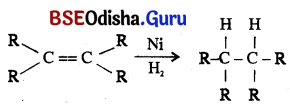Odisha State Board BSE Odisha 9th Class English Solutions Chapter 4 The Missile Man of India Textbook Exercise Questions and Answers.
Class 9th English Chapter 4 The Missile Man of India Question Answers BSE Odisha
The Missile Man of India Class 9 Questions and Answers
Let’s Understand The Text:
Read the text silently and understand. While reading, some new words may stand in your way. Don’t worry. Refer to the ‘Notes and Glossary’ provided at the end of the text. You may also consult a dictionary or your teacher. After you have read, your teacher asks you some questions. Answer them orally.
Question 1.
Who was Dr APJ Abdul Kalam?
(ଡ. ଏପିଜେ ଅବଦୁଲ୍ କଲାମ୍ କିଏ ?)
Answer:
Dr. APJ Abdul Kalam was a celebrated scientist and the 11th President of India. He was popularly known as “The Missile Man of India”.
Question 2.
Why is Dr Kalam known as “The Missile Man of India”?
(ଡ. କଲାମ୍ ‘ଭାରତର କ୍ଷେପଣାସ୍ତ୍ର ମାନବ’ ଭାବେ କାହିଁକି ପରିଚିତ ?)
Answer:
Dr. Kalam was closely involved in India’s civilian space programme and military missile development efforts. So he is known as “The Missile Man of India”.
Question 3.
Where was he born? When?
(ସେ କେଉଁଠାରେ ଜନ୍ମଗ୍ରହଣ କରିଥିଲେ ? କେବେ ?)
Answer:
Dr. Kalam was born in a Tamil Muslim family at Rameswaram in Tamil Nadu on 15 October 1931.
Question 4.
Who were his family members?
(କେଉଁମାନେ ତାଙ୍କର ପାରିବାରିକ ସଦସ୍ୟ ଥିଲେ ?)
Answer:
His family members were his father Jainulabdeen, mother Ashima, three elder brothers and an elder sister.
Question 5.
Who were his father and mother?
(ତାଙ୍କର ପିତା ଓ ମାତା କିଏ ଥିଲେ ?)
Answer:
His father Jainulabdeen was a boat owner and the Imam of a local mosque. His mother Ashiamma was an ordinary housewife.
Question 6.
What was his mother?
(ତାଙ୍କର ମାତା କ’ଣ ଥିଲେ ?)
Answer:
His mother Ashiamma was simply a house-wife and a devotional lady.

Question 7.
How did his father earn his living?
(ତାଙ୍କର ପିତା କିଭଳି ଜୀବିକାର୍ଜନ କରୁଥିଲେ ?)
Answer:
His father owned a ferry that took Hindu pilgrims from Rameswaram to Dhanushkodi and back. He earned his living by this small business.
Question 8.
Were Kalam’s ancestors rich or poor? How do you know it?
(କଲାମ୍ଙ୍କର ପୂର୍ବପୁରୁଷ ଧନୀ ଅଥବା ଗରିବ ଥିଲେ ? ତୁମେ କିପରି ଏହା ଜାଣୁଛ?)
Answer:
Dr. Kalam’s ancestors were rich traders and land owners. Unluckily in course of time they lost their vast properties even their ancestral house and fell on hard times.
Question 9.
How did he add to his family?
(ସେ କିପରି ତାଙ୍କର ପରିବାରକୁ ସହଯୋଗ କରୁଥିଲେ?)
Answer:
In his childhood days he faced misery of life. He had to sell newspapers to supplement his family’s income.
Question 10.
What is the third paragraph about?
(ତୃତୀୟ ପାରାଗ୍ରାଫ୍ କେଉଁଥିପାଇଁ ଉଦ୍ଦିଷ୍ଟ?)
Answer:
The third paragraph is about Kalam’s education in his childhood days. It was also dealt with his loving and affectionate science teacher Sivasubramania Iyer.
Question 11.
Where did he get his primary education?
(ତାଙ୍କର ପ୍ରାରମ୍ଭିକ ଶିକ୍ଷା କେଉଁଠାରେ ପ୍ରାପ୍ତ ହୋଇଥିଲେ?)
Answer:
Dr. Kalam got his primary education at Ramanathpuram.
Question 12.
Who was his science teacher?
(ତାଙ୍କର ବିଜ୍ଞାନ ଶିକ୍ଷକ କିଏ ଥିଲେ ?)
Answer:
Mr. Sivasubramania Iyer was his science teacher when Kalam was in the primary school.
Question 13.
What was he like?
(ସେ କିଭଳି ଥିଲେ ?)
Answer:
The science teacher of the school was loving and affectionate to Kalam. As he was a committed teacher, his inspiration made him great.
Question 14.
What did he invite Kalam for?
(ସେ କଲାମ୍ଙ୍କୁ କେଉଁଥିପାଇଁ ନିମନ୍ତ୍ରଣ କରିଥିଲେ?)
Answer:
Once he invited Kalam for a meal in his house.

Question 15.
How did his wife react to it?
(ଏଥପ୍ରତି ତାଙ୍କ ପତ୍ନୀ କିଭଳି ପ୍ରତିକ୍ରିୟା ପ୍ରକାଶ କରିଥିଲେ?)
Answer:
His wife disliked it and denied serving a Muslim boy like Kalam.
Question 16.
What changed her attitude?
(କ’ଣ ତାଙ୍କର ମନୋବୃତ୍ତିରେ ପରିବର୍ତ୍ତନ ଆଣିଥିଲା ?)
Answer:
When the teacher himself served Kalam, his wife was watching behind the kitchen door. But Kalam’s behaviour, way of taking the meal and cleaning the floor changed her attitude.
Question 17.
How did she behave him later?
(ପରବର୍ତ୍ତୀ ସମୟରେ ସେ ତାଙ୍କୁ କିଭଳି ବ୍ୟବହାର ଦେଖାଇଥିଲେ?)
Answer:
When the teacher invited Kalam next time, she welcomed him and served him food herself.
Question 18.
Who does ‘He’ in the third sentence of para-3 refer to?
(ତୃତୀୟ ଅନୁଚ୍ଛେଦର ତୃତୀୟ ବାକ୍ୟରେ ‘He’ (ସେ) କାହାକୁ ବୁଝାଉଛି ? )
Answer:
‘He’ in third sentence of para-3 refers to Sivasubramania Iyer, Kalam’s science teacher.
Question 19.
The fourth paragraph is about his ________.
(ଚତୁର୍ଥ ଅନୁଚ୍ଛେଦଟି ତାଙ୍କ_________ ବିଷୟରେ ।)
A. elementary education
B. higher education
C. secondary education
D. family
(Say the correct answer.)
Answer:
The fourth paragraph is about his secondary education and higher education.
Question 20.
Was he good at studies at the high school? Read out the sentence in support of your answer.
(ସେ ଉଚ୍ଚ ବିଦ୍ୟାଳୟରେ ପାଠପଢ଼ାରେ ପାରଦର୍ଶୀ ଥିଲେ କି ? ତୁମ ଉତ୍ତର ସମର୍ଥନରେ ଗୋଟିଏ ବାକ୍ୟ କୁହ ।)
Answer:
Yes, in the line “but was considerd a bright and hard working student” shows that he was good at studies at the high school.
Question 21.
What was Kalam’s dream in life?
(ଜୀବନରେ କଲାମଙ୍କର ସ୍ୱପ୍ନ କ’ଣ ଥିଲା)
Answer:
Kalam’s dream in life was to become a pilot.

Question 22.
What did he do to fulfil his dream in life?
(ସେ ତାଙ୍କ ଜୀବନର ସ୍ଵପ୍ନକୁ ପୂରଣ କରିବା ପାଇଁ କ’ଣ କଲେ?)
Answer:
In order to fulfill his dream that to become a pilot, he applied for studying engineering at the Madras Institute of Technology.
Question 23.
Do you have any dream? How can you fulfil your dream in your life?
(ତୁମ ମନରେ କିଛି ସ୍ବପ୍ନ ଅଛି କି ? ତୁମେ ତାକୁ କିଭଳି ପୂରଣ କରିପାରିବ ?)
Answer:
Yes, like others, I have a dream to become an engineer. I am studying hard to fulfil my dream in life.
Question 24.
What problem did he face for his admission into engineering?
(ଇଞ୍ଜିନିୟରିଂ ପଢ଼ିବ ପାଇଁ ସେ କେଉଁ ସମସ୍ୟାର ସମ୍ମୁଖୀନ ହୋଇଥିଲେ ?)
Answer:
It was not so easy to take admission at such a prestigious institution like Madras Institute of Technology. It was an expensive affair. The problem that he faced for his admission into engineering was that he didn’t have one thousand rupees to pay towards his course fee.
Question 25.
Who came to his help? How?
(କିଏ ତାଙ୍କୁ ସାହାଯ୍ୟ କଲା? କିପରି?)
Answer:
Asim Zohra, his loving elder sister came to his help. She mortgaged her gold ornaments for his admission fee.
Question 26.
When did he complete his aerospace engineering?
(ସେ କେବେ ଅନ୍ତରୀକ୍ଷ ଇଞ୍ଜିନିୟରିଂ ପଢ଼ା ଶେଷ କଲେ ?)
Answer:
He completed his aerospace engineering in 1960.
Question 27.
Name the institution where he got –
(ଶିକ୍ଷାନୁଷ୍ଠାନର ନାମ ଲେଖ ଯେଉଁଠାରେ ସେ -)
(a) Secondary Education:
(b) Graduation in Physics:
(c) Aerospace Engineering:
Answer:
(a) He got secondary education at the Schwartz Higher Secondary School.
(b) He got graduation in Physics at, Saint Joseph’s College, Tiruchirapalli.
(c) He got Aerospace Engineering at the Madras Institute of Technology.
Question 28.
The pragraphs- 5 and 6 describe Dr. Kalam’s career as ________.
(ପଞ୍ଚମ ଓ ଷଷ୍ଠ ଅନୁଚ୍ଛେଦରେ କଲାମଙ୍କର ବୃତ୍ତି ଜଣେ __________ ଭାବରେ ବର୍ଣ୍ଣନା କରାଯାଇଛି ।)
- a marine engineer
- an aerospace scientist
- a plant scientist
- a software engineer
Answer:
The paragraph 5 and 6 describe Dr. Kalam’s career as an aerospace scientist.
Question 29.
How did he begin his career?
(ସେ ତାଙ୍କର ବୃତ୍ତି କିଭଳି ସେ ଆରମ୍ଭ କଲେ ?)
Answer:
Kalam began his career as a trainee at Hindustan Aeronautics Limited in Bangalore.
Question 30.
Where was he appointed as a scientist first?
(ଜଣେ ବୈଜ୍ଞାନିକ ଭାବରେ କେଉଁଠାରେ ସେ ପ୍ରଥମେ ନିଯୁକ୍ତି ପାଇଲେ?)
Answer:
He was appointed as a scientist first at the Defence Research Development Organisation (DRDO).

Question 31.
When did he start his work in the Indian Space Research Organisation?
(ଭାରତୀୟ ଅନ୍ତରୀକ୍ଷ ଗବେଷଣା ପ୍ରତିଷ୍ଠାନରେ ସେ କେବେ ତାଙ୍କର କାର୍ଯ୍ୟ ଆରମ୍ଭ କଲେ?)
Answer:
He started his work in the Indian Space Research Organisation in 1969.
Question 32.
What was the purpose of the satellite?
(ଉପଗ୍ରହର ଉଦ୍ଦେଶ୍ୟ କ’ଣ ଥିଲା?)
Answer:
The purpose of satellite was to develop the technology to launch the satellite into the orbit.
Question 33.
When was the first Rohini satellite launched into the orbit?
(ପ୍ରଥମ ରୋହିଣୀ ଉପଗ୍ରହକୁ କେବେ କକ୍ଷପଥରେ ଅବସ୍ଥାପିତ କରାଗଲା?)
Answer:
The first Rohini satellite launched into the orbit in 1980.
Question 34.
How many years did Kalam spend in the ISRO?
(ଇସ୍ରୋରେ କଲାମ୍ କେତେ ବର୍ଷ ବିତାଇଥିଲେ?)
Answer:
Kalam spent nineteen years in the ISRO.
Question 35.
Where did he take the leading role in the development of India’s missiles and nuclear weapons programme?
(ସେ କେଉଁଠାରେ ଭାରତର କ୍ଷେପଣାସ୍ତ୍ର ଓ ପରମାଣୁ ଅସ୍ତ୍ରଶସ୍ତ୍ର କାର୍ଯ୍ୟକ୍ରମର ବିକାଶ ନିମନ୍ତେ ମୁଖ୍ୟ ଭୂମିକା ନିର୍ବାହ କରିଥିଲେ?)
Answer:
Kalam took the leading role in the development of India’s missiles and nuclear weapons programme at the DRDO.
Question 36.
What made him extremely popular in the country?
(ସେ କେଉଁଥପାଇଁ ଦେଶର ଅତୀବ ଲୋକପ୍ରିୟ ହୋଇଥିଲେ?)
Answer:
Under his guidance and supervision the development of India’s missiles and nuclear
weapons programme became very successful and led to the development of four missiles namely Prithi, Trishul, Akash and Nag. This made him extremely popular in the country.
Question 37.
What was he called after the success of the four missiles- Prithvi, Trishul, Akash and Nag?
(ପୃଥବୀ, ତ୍ରିଶୂଳ, ଆକାଶ ଓ ନାଗ୍ – ଏହି ଚାରୋଟି କ୍ଷେପଣାସ୍ତ୍ର ସଫଳତା ପରେ, ତାଙ୍କୁ କ’ଣ କୁହାଗଲା?)
Answer:
After the success of the four missiles- Prithvi, Trishul, Akash and Nag, he was popularly called as “The Missile Man of India”
Question 38.
Why did he camp in Rajasthan’s Thar Desert?
(ରାଜସ୍ଥାନର ଥର୍ ମରୁଭୂମିରେ ସେ କାହିଁକି ଅସ୍ଥାୟୀ ଭାବେ ରହିଥିଲେ ?)
Answer:
Kalam camped in Rajasthan’s Thar Desert to supervise the Pokhran-II, nuclear tests.
Question 39.
What, according to Dr Kalam, was the “defining moment” in the history of our country?
(ଡ. କଲାମ୍ଙ୍କ ଅନୁସାରେ, ଭାରତ ଇତିହାସରେ ଘଡ଼ିସନ୍ଧି ମୁହୂର୍ଭ କେଉଁଟି ଥିଲା ?)
Answer:
According to Dr Kalam, his stay in Rajasthan’s Thar Desert for a fortnight to supervise the Pokharan-II nuclear tests was the defining moment in the history of our country.
Question 40.
Why was it very hard to camp in Rajasthan’s Thar Desert?
(ରାଜସ୍ଥାନର ଥର୍ ମରୁଭୂମିରେ ଅସ୍ଥାୟୀ ଭାବେ ଅବସ୍ଥାନ କରିବା କାହିଁକି କଠିନ ଥୁଲା ?)
Answer:
It was very hard to camp in Rajasthan’s Thar Desert because these were the hot days of 1998 at Pokhran. On a particular day the temperature there rose to 53° C.

Question 41.
What are Kalam’s contributions for India’s defence programme?
(ଭାରତର ପ୍ରତିରକ୍ଷା କାର୍ଯ୍ୟକ୍ରମକୁ କଲାମ୍ର ଦାନ କ’ଣ ଥିଲା ?)
Answer:
Kalam’s contribution for India’s defence programme is great. He had developed a number of missiles and nuclear weapons for the sake of country’s defence.
Question 42.
Dr. Kalam was the Chief Scientific Advisor to _______ of India.
(ଡ. କଲାମ୍ ଭାରତର ___________ ଙ୍କ ମୁଖ୍ୟ ବିଜ୍ଞାନ ବିଷୟକ ପରାମର୍ଶଦାତା ଥିଲେ ।)
i. the President
iii. the Field Marshal
ii. the Prime Minister
iv. the Secretary of Defence
(Choose the correct answer.)
Answer:
Dr. Kalam was the Chief Scientific Advisor to the Prime Minister of India.
Question 43.
What awards and honours was Kalam honoured with?
(କଲାମ୍ଙ୍କୁ କେଉଁ ସମ୍ମାନଗୁଡ଼ିକରେ ସମ୍ମାନିତ ହୋଇଥିଲେ ?)
Answer:
Dr. Kalam was honoured with the Padma Bhushan in 1981, the Padma Vibhusan in 1990 and the nation’s highest civilian honour, The Bharat Ratna in 1997.
Question 44.
What is the highest civilian award of our country?
(ଭାରତର ସର୍ବଶ୍ରେଷ୍ଠ ବେସାମରିକ ସମ୍ମାନ କ’ଣ ଅଟେ?)
Answer:
The highest civilian award of our country is ‘the Bharat Ratna’.
Question 45.
How did Kalam pass away?
(କଲାମ୍ କିପରି ଶେଷ ନିଶ୍ଵାସ ତ୍ୟାଗ କଲେ?)
Answer:
On 27th July 2015 Dr. Kalam was delivering a lecture in Shillong. During the course of his lecture, he collapsed and was immediately taken to the hospital. There he passed away from us in a massive cardiac arrest.
Question 46.
Why will people of our country remember Kalam forever?
(ଆମ ଦେଶର ଲୋକମାନେ କଲାମ୍ଙ୍କୁ କାହିଁକି ମନେ ରଖୁବେ?)
Answer:
The people of our country will remember Kalam for his dedication, devotion and selfless service to the nation, particularly as ‘The Missile Man of India’.
Question 47.
What qualities of Dr Kalam do you like very much?
(କଲାମ୍ଙ୍କର କେଉଁ ଗୁଣଗୁଡ଼ିକ ତୁମକୁ ବେଶି ଭଲ ଲାଗୁଛି ?)
Answer:
Dr. Kalam was qualitative man. His simple living, ideal life, great devotion and dedication and service to the nation make him popular in the country.

Question 48.
Can you say the names of some eminent scientists who have contributed a lot to our country?
(ଯେଉଁ ପ୍ରଖ୍ୟାତ ବୈଜ୍ଞାନିକମାନେ ଦେଶ ପାଇଁ ଅନେକ ଅବଦାନ ଦେଇଯାଇଛି ତୁମେ ସେମାନଙ୍କ ମଧ୍ୟରୁ କେତେକଙ୍କ ନାମ କହିପାରିବ କି?)
Answer:
C.V. Raman, Homi J. Bhabha, Visvesvaraya and Vikram Sarabhai are some of the eminent great scientists of our country. They have contributed a lot for our country.
Let’s Understand The Text: (ଆସନ୍ତୁ ପାଠ୍ୟକୁ ବୁଝିବା:)
(a) Match the paragraph numbers under column- ‘A’ with their main ideas given under column-‘B\ Write the paragraph number in the box given against each idea. (Question with Answer)
(‘A’ ସ୍ତମ୍ଭ ତଳେ ଥିବା ଅନୁଚ୍ଛେଦ କ୍ରମ ସଂଖ୍ୟା ସହ ‘B’ ସ୍ତମ୍ଭ ତଳେ ଥିବା ମୁଖ୍ୟ ବିଷୟବସ୍ତୁ ମିଳାଅ । ଅନୁଚ୍ଛେଦ କ୍ରମ ସଂଖ୍ୟାକୁ ପ୍ରଦତ୍ତ ବାକ୍ସ ଭିତରେ ଲେଖ । ଗୋଟିଏ ତୁମ ପାଇଁ କରିଦିଆଯାଇଛି ।)
A
(Paragraph Numbers) |
B
Main Ideas |
| 1 |
[ ] Elementary education |
| 2 |
[ ] Death of Kalam |
| 3 |
[ ] Awards and honours |
| 4 |
[ ] Introducing Dr APJ Abdul Kalam |
| 5, 6 and 7 |
[ ] Secondary and higher education |
| 8 |
[ ] Kalam’s childhood |
| 9 |
[ ] Career and contribution |
Answer:
A
(Paragraph Numbers) |
B
Main Ideas |
| 1 |
3 Elementary education |
| 2 |
9 Death of Kalam |
| 3 |
8 Awards and honours |
| 4 |
1 Introducing Dr APJ Abdul Kalam |
| 5, 6 and 7 |
4 Secondary and higher education |
| 8 |
2 Kalam’s childhood |
| 9 |
5, 6 and 7 Career and contribution |
(b) Fill in the blanks choosing the right answers from brackets.
(ବନ୍ଧନୀ ମଧ୍ଯରେ ସଠିକ୍ ଉତ୍ତର ବାଛି ଶୂନ୍ୟସ୍ଥାନ ପୂରଣ କର ।)
[elementary education, his science teacher, the People’s President, his family income, Chief Scientific Advisor, The Bharat Ratna, development of four missiles, Integrated Missile Development Programme]
(i) Dr APJ Abdul Kalam is popularly known as ________.
(ii) Kalam has to sell newspapers to supplement ________.
(iii) Kalam started his ______ at Ramanathapuram.
(iv) Kalam’s most favourite teacher was ________.
(v) Dr Kalam was popularly called ‘The Missile Man of India’ after the success of the _________.
(vi) The successful launch of the missiles was possible when Kalam was heading the ________.
(vii) Dr APJ Abdul Kalam was honoured the nation’s highest honour ________ in 1997.
(viii) Dr Kalam was the________ to the Prime Minister and the Secretary of Defence Research and Development Organisation.
Answer:
(i) Dr APJ Abdul Kalam is popularly known as people’s President.
(ii) Kalam has to sell newspapers to supplement his family income.
(iii) Kalam started his elementary education at Ramanathapuram.
(iv) Kalam’s most favourite teacher was his science teacher.
(v) Dr Kalam was popularly called ‘The Missile Man of India’ after the success of the development of four missiles.
(vi) The successful launch of the missiles was possible when Kalam was heading the Integrated Missile Development Programme.
(vii) Dr APJ Abdul Kalam was honoured the nation’s highest honour the Bharat Ratna in 1997.
(viii) Dr Kalam was the Chief Scientific Advisor to the Prime Minister and the Secretary of Defence Research and Development Organisation.
(c) Read the text and find out the situations :
(ପାଠ୍ୟବିଷୟକୁ ପଢ଼ ଏବଂ ପରିସ୍ଥିତିକୁ ଖୋଜି ବାହାର କର ।)
(i) when Kalam faced challenges on his way to achievements
Answer:
Kalam faced challenges on his way to achievements at the time of taking admission in the Madras Institute of Technology.
(ii) when Kalam felt happy –
Answer:
Kalam faced challenges on his way to achievements at the time of taking admission in the Madras Institute of Technology.
Let’s Talk : ଆସନ୍ତୁ ଆଲୋଚନା କରିବା
(a) Listen to each of the following expressions and say the line(s) and paragraph number in which it occurs. (Question with Answer)
(ତଳଲିଖ ଉକ୍ତିଗୁଡ଼ିକୁ ଶୁଣ ଏବଂ ଧାଡ଼ି ଏବଂ ଅନୁଚ୍ଛେଦ କ୍ରମ ସଂଖ୍ୟା କୁହ ।)
Question 1.
Kalam as the 11th President of India
Answer:
In 2002, he was elected as the 11th President of India, and was widely referred to as the “People’s President”. (Line – 3, Paragraph – 1)

Question 2.
Date and place of birth of Kalam
Answer:
Dr. Abdul Kalam was born on 15th October 1931 in a Tamil Muslim family at Rameswaram in the state of Tamil Nadu. (Line – 1, Paragraph – 2)
Question 3.
Kalam’s elementary education
Answer:
Kalam started his elementary education at Ramanathapuram. (Line – 3, Paragraph – 3)
Question 4.
The Schwartz Higher Secondary School
Answer:
Kalam then moved to the Schwartz Higher Secondary School for his secondary education. (Line – 1, Paragraph – 4)
Question 5.
He graduated in Physics
Answer:
After completing his studies here, Kalam was admitted to Saint Joseph’s College, Tiruchirappalli where he graduated in Physics in 1954. (Line – 4, Paragraph – 4)
Question 6.
Zohra, his sister helped Kalam for his education
Answer:
Asim Zohra, his compassionate elder sister, came to his help. (Line – 10, Paragraph – 4)
Question 7.
He completed aerospace engineering in 1960.
Answer:
And he completed his aerospace engineering in 1960. (Line – 12, Paragraph – 4)
Question 8.
Joined DRDO
Answer:
Then he joined the Defence Research Development Organisation (DRDO) as a scientist. (Line – 2, Paragraph – 5)
Question 9.
Kalam succeeded in launching the first satellite, Rohini.
Answer:
It was under Dr Kalam’s direct guidance and supervision that the first Rohini satellite was successfully launched into the orbit in 1980. (Line – 5, Paragraph – 5)

(b) Say the full forms of the following acronyms/abbreviations in a chain-drill, (one after another)
(ନିମ୍ନଲିଖ ସଂକ୍ଷିପ୍ତ ରୂପଗୁଡ଼ିକର ପୂର୍ବରୂପ କ୍ରମାନୁସାରେ କୁହ ।) (ଗୋଟିକ ପରେ ଗୋଟିଏ)
(i) HAL: Hindustan Aeronautics Limited
(ii) DRDO: Defence Research Development Orgnisation.
(iii) ISRO: Indian Space Research Organisation
(iv) SLV: Satellite Launch Vehicle
(v) IGMDP: Integrated Missile Development Programme
Let’s Learn Words: ଆସନ୍ତୁ ଶବ୍ଦ ଶିଖିବା:
(a) Match the words under ‘A’ with their opposite meanings under ‘B’. One is done for you.
(ସ୍ତମ୍ଭ ‘A’ ତଳେ ଥିବା ଶବ୍ଦଗୁଡ଼ିକୁ ସ୍ତମ୍ଭ ‘B’ ତଳେ ଥିବା ଶବ୍ଦ ସହ ମିଳାଅ । ଗୋଟିଏ ତୁମ ପାଇଁ କରି ଦିଆଯାଇଛି ।)
A
Words |
B
Opposite Meanings |
| complete |
unpopular |
| educated |
inexpensive |
| expensive |
unsuccessful |
| successful |
insufficient |
| popular |
incomplete |
| sufficient |
uneducated |
Answer:
A
Words |
B
Opposite Meanings |
| complete |
unpopular |
| educated |
inexpensive |
| expensive |
unsuccessful |
| successful |
insufficient |
| popular |
incomplete |
| sufficient |
uneducated |
(b) Match the words/phrases under ‘A’ with their meanings tinder ‘B\ Write the number of the word in the box for each. (Question with Answer)
(‘A’ ତଳେ ଥିବା ଶବ୍ଦଗୁଡ଼ିକୁ ‘B’ ତଳେ ଥିବା ସେଗୁଡ଼ିକର ଅର୍ଥ ସହ ମିଳାଅ । ପ୍ରତ୍ୟେକ ଶବ୍ଦର କ୍ରମ ସଂଖ୍ୟା ବାକ୍ସ ମଧ୍ୟରେ ଲେଖ ।)
A
Words |
B
Meanings |
| 1 distinguished |
[ ] important time |
| 2 referred to |
[ ] kindhearted |
| 3 supplement |
[ ]became senseless because of illness |
| 4 compassionate |
[ ]to start an activity |
| 5 launch |
[ ] an weapon sent through the air that explodes when it hits a target |
| 6 defining moment |
[ ] most popular (known as) |
| 7 collapsed |
[ ] very successful and admired by people |
| 8 missile |
[ ] 3 to add to something to improve it |
A
Words |
B
Meanings |
| 1 distinguished |
6 important time |
| 2 referred to |
4 kindhearted |
| 3 supplement |
7 became senseless because of illness |
| 4 compassionate |
5 to start an activity |
| 5 launch |
8 an weapon sent through the air that explodes when it hits a target |
| 6 defining moment |
2 most popular (known as) |
| 7 collapsed |
1 very successful and admired by people |
| 8 missile |
3 to add to something to improve it |

(c) Read the following sentence and mark the word in bold letters.
His mother, Ashiamma was a housewife.
Here the word- housewife in the above sentence is built with two words: house + wife.
This is a compound word.
(i) Given below are some compound words. Break them as done above. (Question with answer)
(ତଳେ କେତେକ ଯୌଗିକ ଶବ୍ଦ ଦିଆଯାଇଛି । ଉପରେ କରାଯାଇଥିବା ଭଳି ସେଗୁଡ଼ିକୁ ଅଲଗା ଅଲଗା କର ।)
| landowner |
= |
land |
+ |
owner |
| weekend |
= |
week |
+ |
end |
| milestone |
= |
mile |
+ |
stone |
| headline |
= |
head |
+ |
line |
| newspaper |
= |
news |
+ |
paper |
| overtime |
= |
over |
+ |
time |
| childhood |
= |
child |
+ |
hood |
(ii) Will you write ten more compound words on your own?
(ତୁମେ ନିଜେ ଆଉ ଦଶଟି ଶବ୍ଦ ଲେଖୁରିବ କି ?)
Answer:
| airbase |
= |
air |
+ |
base |
| shorthand |
= |
short |
+ |
hand |
| lowland |
= |
low |
+ |
land |
| headword |
= |
head |
+ |
word |
| washerman |
= |
washer |
+ |
man |
| heatwave |
= |
heat |
+ |
wave |
| downstream |
= |
down |
+ |
stream |
| airbag |
= |
air |
+ |
bag |
| wasteland |
= |
waste |
+ |
land |
| grandparents |
= |
grand |
+ |
parents |
Let’s Learn Language: ଆସନ୍ତୁ ଶିଖିବା ଭାଷା:
(a) Study the following sentence and mark the words in bold letters.
Dr APJ Abdul Kalam was bom on 15 October 1931.
We use the past form of the ‘be’ verb – was/were + born (the third form of the verb ‘bear’) to talk about the event of birth of a person.
Work in pairs, discuss and fill in the blanks in the table. Then write the sentence below the table. One is done for you. (Question with Answer)
(ଯୋଡ଼ି ହୋଇ ଆଲୋଚନା କର ଏବଂ ସାରଣୀରେ ଥିବା ଶୂନ୍ୟସ୍ଥାନ ପୂରଣ କର । ତା’ପରେ ବାକ୍ୟଟିକୁ ସାରଣୀ ତଳେ ଲେଖ । ଗୋଟିଏ ତୁମ ପାଇଁ କରି ଦିଆଯାଇଛି ।)
| Name of the person |
Place of Birth |
Date of Birth |
| Mahatma Gandhi |
Porbandar, Gujrat |
2nd October 1869 |
| Dr. Sarvepalli Radhakrishnan |
Tiruttani, Madras |
5th September 1888 |
| Gopabandhu Dash |
Suando, Puri, Odisha |
9th October 1877 |
| Madhusudan Das |
Satyabhamapur, Cuttack Odisha, |
28th April 1848 |
| Biju Patnaik |
G.Nuagan, Bellaguntha, Ganjam, Odisha |
5th March 1916 |
| Jagadish Chandra Bose |
Memvnesinsh in Bengal |
30 November 1858 |
1. Jagadish Chandra Bose was born at Memynesingh in Bengal on 30 November 1858.
2. Mahatma Gandhi was bom at Porbandar, Gujrat on 2nd October 1869
3. Dr. Sarvepalli Radhakrishnan was born at Tiruttani, Madras on 5th September 1888
4. Gopabandhu Dash was bom at Suando, Puri, Odisha on 9th October 1877
5. Madhusudan Das was bom at Satyabhamapur, Cuttack, Odisha on 28th April, 1848 . 6. Biju Pattanik was bom at G. Nuagan, Bellaguntha, Ganjam, Odisha on 5th March 1916.

(b) Read the following sentences carefully and mark the verbs in bold letters.
1. Kalam was the youngest of four brothers and one sister in his family.
2. Mathematics was his favourite subject.
3. Around a thousand rupees was required to pay towards the course fee.
4. Bundles of newspapers were distributed by Kalam.
Here the verb ‘was’ agrees with the subjects of the sentence from l to 3; Kalam, Mathematics, a thousand rupees, and the verb ‘were’ in the sentence – 4 agrees with the subject ‘Bundles of newspapers’.
Let us now know more about ‘Subject and Verb Agreement’.
- Nouns like news, physics, mathematics, measles and ethics look like plural in form but they are singular and take singular verbs.
- Uncountable nouns like furniture, equipment, stationery, luggage, weather, advice and information are singular and used with singular verbs.
- Nouns like compasses, glasses, goods, trousers, police, people, etc. take plural verbs
Fill in the blanks with the correct verb choosing from brackets given against each.
(ପ୍ରତ୍ୟେକର ପାର୍ଶ୍ଵରେ ଥିବା ବନ୍ଧନୀ ମଧ୍ଯରୁ ସଠିକ୍ କ୍ରିୟାପଦ ବାଛି ଶୂନ୍ୟସ୍ଥାନ ପୂରଣ କର ।)
(i) Gymnastics ______ sport, (is/are)
Answer:
is
(ii) Social Studies _______ my favourite subject, (is/are)
Answer:
is
(iii) Politics ______here and now. (is/are)
Answer:
is
(iv) The news _______been published in the local daily. (has/have)
Answer:
has
(v) The police ________ the traffic. (control/controls)
Answer:
control
(vi) A hundred kilometres ________ a long distance. (is/are)
Answer:
is
(vii) Measles ______ fever. (cause/causes)
Answer:
causes

Let’s Write:
(a) Given below are some important events from the text. They are not in order. Arrange them in order and put the serial number in the box for each. Write the sentences.
( ନିମ୍ନରେ ପାଠ୍ୟବିଷୟର କେତେକ ପ୍ରଧାନ ଘଟଣା ଦିଆଯାଇଛି । ସେଗୁଡ଼ିକ କ୍ରମରେ ନାହାନ୍ତି । ସେଗୁଡ଼ିକୁ କ୍ରମାନୁସାରେ ସଜାଅ ଓ ପ୍ରତ୍ୟେକଟି ପାଇଁ ବାକ୍ସ ମଧ୍ୟରେ କ୍ରମସଂଖ୍ୟା ଲେଖ । ବାକ୍ୟଗୁଡ଼ିକୁ ଲେଖ ।)
(i) He graduated in Physics from Saint Joseph’s College, Tiruchirappalli. [4]
(ii) He played a pivotal role in the Pokhran-II nuclear test project. [5]
(iii) Abdul Kalam was born to a Tamil Muslim family in the pilgrimage centre of Rameswaram. [1]
(iv) He got his elementary education at Ramanathapuram. [2]
(v) He went to Schwartz Higher Secondary School for his secondary education. [3]
(vi) He became the Head of the Integrated Missile Development Programme and succeeded in launching Prithvi missile. [5]
(vii) He breathed his last on July, 27, 201 5. [8]
(viii) He became the Chief Scientific Advisor to the Prime Minister of India in 1992. [7]
Answer:
(iii) Abdul Kalam was born to a Tamil Muslim family in the pilgrimage centre of Rameswaram. [1]
(iv) He got his elementary education at Ramanathapuram. [2]
(v) He went to Schwartz Higher Secondary School for his secondary education. [3]
(i) He graduated in Physics from Saint Joseph’s College, Tiruchirappalli. [4]
(vi) He became the Head of the Integrated Missile Development Programme and succeeded in launching Prithvi missile. [5]
(ii) He played a pivotal role in the Pokhran-II nuclear test project. [6]
(viii) He became the Chief Scientific Advisor to the Prime Minister of India in 1992. [7]
(vii) He breathed his last on July 27, 2015. [8]
(b) Read the text and fill in the bio-data of Dr Kalam given below.
(ପାଠ୍ୟବିଷୟକୁ ପଢ଼ ଓ ନିମ୍ନରେ ଥିବା କଲାମ୍ଙ୍କ ଆତ୍ମ ବିବରଣୀ ପତ୍ରର ଶୂନ୍ୟସ୍ଥାନ ପୂରଣ କର ।)
|
|
Bio-Data |
| Name in full |
: |
|
| Father’s name |
: |
|
| Mother’s name |
: |
|
| Place of birth |
: |
|
| Date of birth |
: |
|
| Brothers and sister |
: |
|
| Nationality |
: |
|
| Religion |
: |
|
| Education |
: |
|
| Profession |
: |
|
| Important post held |
: |
|
| Achievements |
: |
|
| Awards/honours |
: |
|
| Life style |
: |
|
| Date of passing away |
: |
|
Answer:
|
|
Bio-Data |
| Name in full |
: |
Avul Pakir Jainulabdeen Abdul Kalam |
| Father’s name |
: |
Jainulabdeen |
| Mother’s name |
: |
Ashiamma |
| Place of birth |
: |
Rameswaram in the state of Tamil Nadu |
| Date of birth |
: |
15th October 1931 |
| Brothers and sister |
: |
They are four brothers and one sister |
| Nationality |
: |
Indian |
| Religion |
: |
Muslim |
| Education |
: |
graduate in Physics, aerospace engineering etc. |
| Profession |
: |
Aerospace scientist |
| Important post held |
: |
Chief Scientific Advisor to the Prime Minister and the Secretary of DRDO |
| Achievements |
: |
Successfully develop four missiles as the head of IGMDP |
| Awards/honours |
: |
the Padma Bhushan in 1981, the Padma Vibhushan in 1990 and the Bharat Ratna in 1997. |
| Life style |
: |
very simple, dedicated and devotional |
| Date of passing away |
: |
27th Ju1y 20l5 |
(c) Use the facts/information you gathered in the Bio-data Form above and write a composition on Dr Kalam.
(ଉପରିସ୍ଥ କଲାମ୍ଙ୍କ ଆତ୍ମ ବିବରଣୀପତ୍ରରେ ତୁମେ ଏକତ୍ର କରିଥିବା ତଥ୍ୟଗୁଡ଼ିକୁ ବ୍ୟବହାର କରି ଏକ ଅନୁଚ୍ଛେଦ ଲେଖ ।)
Answer:
Dr. APJ Abdul Kalam was a celebrated scientist of India. His father was Jainulabdeen and mother was Ashiamma. He was born on 15th October 1931 at Rameswaram in the state of Tamil Nadu. He had three brothers and one sister. He was Muslim in religion and he was an Indian. He was graduated in Physics and completed aerospace engineering. He worked as a scientist in DRDO and ISRO. He was appointed as the Chief Scientific Adviser to the Prime Minister and the Secretary of DRDO. He was awarded with the Padma Bhusan in 1981, the Padma Vibhusan in 1990 and the Bharat Ratna in 1997. This missile man departed from us on 27th July 2015.

(d) Refer to the text and fill in the blanks in the following table with correct information wherever possible. Then write a paragraph about the events/achievements of Dr APJ Abdul Kalam. (Question with Answer)
(ପାଠ୍ୟବିଷୟକୁ ଆଧାର କରି ଯଥାସମ୍ଭବ ସଠିକ୍ ତଥ୍ୟଦ୍ୱାରା ଶୂନ୍ୟସ୍ଥାନ ପୂରଣ କର । ତା’ପରେ ଡ. ଏପିଜେ ଅବ୍ଦୁଲ୍ କଲାମ୍ଙ୍କ ସମ୍ପର୍କିତ ଘଟଣା/କୃତି ବିଷୟରେ ଏକ ପ୍ରବନ୍ଧ ଲେଖ ।)
| Events/activities |
Place |
Year of happening |
| Birth |
Rameswaram in the state of Tamil Nadu |
15th October 1931 |
| Completed aerospace engineering |
Madras Institute of Technology |
1960 |
| Began career as a trainee |
Hindustan Aeronautics Limited |
|
| Joined as a scientist |
Defence Research Development Organisation |
|
| Project Director, ISRO |
ISRO |
1969 |
| Launching of Rohini satellite |
ISRO |
1980 |
| Headed the IGMDP |
DRDO |
|
| Supervised Pokhran-II nuclear tests |
Rajasthan’s Thar Desert |
1998 |
| Scientist of DRDO |
DRDO |
1998 |
| President |
India |
2002 |
| Death |
Shillong |
27th July 2015 |
Paragraph :
Dr. APJ Abdul Kalam was born at Rameswaram in the state of Tamil Nadu. He studies at the Madras Institute of Technology and completed aerospace engineering in 1960. He began his career as a trainee at Hindustan Aeronautics Limited. Then he joined the Defence Research Development Organisation as a scientist. In 1969, he was transferred to ISRO, where he worked as the Project Director of SLV-III.
There under his direct guidance and supervision the first Rohini satellite was successfully launched into the orbit in 1980. Then he returned to the DRDO and headed the IGMDR. In 1998, he supervised the Pokhran-H nuclear test in Rajasthan’s Thar Desert. He was a scientist at the DRDO in 1998. He was elected as the President of India in 2002. On 27th July 2015, while he was delivering a lecture at Shillong suffered a massive cardiac arrest and was taken to the hospital and passed away there.
BSE Odisha 9th Class English The Missile Man of India Important Questions and Answers
Very Short & Objective Questions With Answers
Answer The Following In A Sentence
Question 1.
Who was APJ Abdul Kalam?
Answer:
APJ Abdul Kalam was one of the most distinguished scientists and the 11th President of India.
Question 2.
What was Dr Abdul Kalam involved?
Answer:
Dr Abdul Kalam was involved in India’s civilian space programme and military development efforts.

Question 3.
Where was Dr Abdul Kalam born?
Answer:
Dr Abdul Kalam was born in Tamil Muslim family at Rameswaram in Tamilnadu
Question 4.
What was Dr Abdul Kalam’s father?
Answer:
Dr Abdul Kalam’s father, Jainulabdeen was a boat owner and the Imam of a local mosque.
Question 5.
What was Dr Kalam’ mother?
Answer:
Dr Kalam’ mother Ashimma was a housewife.
Question 6.
How did Dr Kalam’s father earn his living?
Answer:
Dr Kalam’s father earned his living by taking Hindu pilgrims back and forth between Rameswaram and Dhanushkodi.
Question 7.
What were Dr Kalam’s ancestors like?
Answer:
Dr Kalam’s ancestors were very rich because they were wealthy traders and land owners.
Question 8.
How did Kalam add to his family?
Answer:
Kalam added to his family by selling newspapers.
Question 9.
Where did Abdul Kalam receive his primary education?
Answer:
Abdul Kalam received his primary education at Ramanathapuram.
Question 10.
Who was Abdul Kalam’ science teacher when he was in primary school?
Answer:
Mr Sivasubramania Iyer was Kalam’s science teacher when he was in the priamary school.
Question 11.
What was Kalam’s science teacher like?
Answer:
Kalam’s science teacher was a very loving and affectionate person.

Question 12.
How did Kalam’s science teacher inspire him?
Answer:
Kalam’s science teacher Sivasubramania inspired him to develop his skills in different subjects at school.
Question 13.
What did Kalam’s science teacher invite him for?
Answer:
Kalam’s science teacher invited him for a meal in his house.
Question 14.
How did his teacher’s wife react to it?
Answer:
His teacher’s wife disliked Kalam and refused to serve a Muslim child like him.
Question 15.
How was her attitude changed?
Answer:
Kalam’s behaviour, way of taking meal and cleaning the floor changed her attitude.
Question 16.
How did the science teacher’s wife behave him later?
Answer:
In his second visit his teacher’s wife welcomed him and served him food herself.
Question 17.
How was Kalam getting on his studies at the High School?
Answer:
Kalam was of average grades in his school years but was considered a bright and hardworking student.
Question 18.
What was Kalam’s dream in life?
Answer:
Kalam’s dream in life was to be a pilot.
Question 19.
What college did he go to fulfil his dream?
Answer:
He applied for studying at the Madras Institute of Technology to fulfil his dream.
Question 20.
What problems did he face for his admission into engineering?
Answer:
The problem that he faced for his admission into engineering was that he did not have one thousand rupees to pay towards his course fee.
Question 21.
Who came to help Kalam for admission into the engineering?
Answer:
His elder sister Ashima Zohra came to help him for his admission into the engineering college.
Question 22.
In which year did he complete his aerospace engineering course?
Answer:
He completed his aerospace engineering course in 1960.
Question 23.
Where did he graduate in physics?
Answer:
He graduated in physics at Saint Joseph’s College in Tiruchirapalli.

Question 24.
At what college did Kalam complete his graduation in physics?
Answer:
Kalam completed his graduation in physics at Saint Joseph’s College in Tiruchirapalli.
Question 25.
How did Kalam’s elder sister manage to arrange money for his admission into the engineering college?
Answer:
Kalam’s elder sister mortgaged her gold ornaments and managed to arrange his admission fee.
Answer The Followings In A Word Or A Phrase.
Question 1.
When was Dr Abdul Kalam elected as the President of India?
Answer:
in 2002
Question 2.
When was Dr Abdul Kalam born?
Answer:
on 15 October 1931
Question 3.
In which state was Dr Abdul Kalam born?
Answer:
in Tamilnadu
Question 4.
What is the weapon that explodes in the air when it hits the thing that is aimed at?
Answer:
missile
Question 5.
Who is the religious person who leads the prayer in the mosque?
Answer:
Imam
Question 6.
What do we call a building where Muslims worship?
Answer:
mosque
Question 7.
What do we call a man who travels a holy place for religious purpose?
Answer:
pilgrim

Question 8.
What do we call a man who lived in the family a long time ago?
Answer:
ancestor
Question 9.
What do we call a person whose job is to buy and sell things?
Answer:
trader
Question 10.
What did Kalam have to do to supplement his family’s income?
Answer:
to sell newspapers
Question 11.
Who was Kalam’s favourite teacher?
Answer:
his science teacher
Question 12.
Who inspired Kalam to develop his skills in education?
Answer:
Sivasubramania Iyer
Question 13.
Where did Kalam’s teacher’s wife watch them eat?
Answer:
behind the kitchen door
Question 14.
What was Dr Kalam good at?
Answer:
Mathematics

Question 15.
Which college, according to the writer, is prestigious and expensive?
Answer:
the Madras Institute of Technology
Question 16.
What was Dr Kalam’s dream?
Answer:
to become a pilot
Question 17.
When was Dr Kalam transferred to ISRO?
Answer:
in 1969
Question 18.
What is Dr Kalam popularly called?
Answer:
the Missile Man of India
Question 19.
How did Dr Kalam begin his career?
Answer:
as a trainee
Question 20.
Where did Dr Kalam join as a scientist?
Answer:
at the Defence Research Development Organisation (DRDO)
Question 21.
When was the first Rohini satellite successfully launched into the orbit?
Answer:
in 1980

Question 22.
How long had Kalam camped at the Thar Desert?
Answer:
a fortnight
Question 23.
What is the empty area in the sky called?
Answer:
space
Question 24.
Where is the Thar Desert?
Answer:
in Rajasthan
Question 25.
What was the temperature in the desert at Pokhran on the day of nuclear test?
Answer:
53 degree centigrade
Fill In The Blanks
1._________ was the Imam of the local mosque.
Answer:
Jainulabdeen
2. Kalam’s father owned a _______.
Answer:
ferry
3. Kalam’s science teacher invited him home for _______.
Answer:
a meal
4. Dr Kalam graduated in ________.
Answer:
physics
5. A boat that carries people is called ________.
Answer:
ferry
6. A man whose job is to lead the prayer in a mosque is called as __________.
Answer:
Imam

7. Dr Kalam was popularly called __________.
Answer:
the Missile Man of India
8. _________ is well-known for Ramanathswamy Temple.
Answer:
Rameswaram
9. Prithvi is the name of a __________
Answer:
missile
10. Dr Kalam passed away while he was delivering his speech at _________
Answer:
Shillong
11. Dr Kalam died because he suffered a massive _________.
Answer:
cardiac arrest
12. Rameswaram is located in __________.
Answer:
Tamilnadu
13. Dr Kalam was awarded the honour the Padma Vibhushan in_________.
Answer:
1990
14. The town in Tamilnadu which was destroyed in 1964 cyclone is__________.
Answer:
Dhanushkodi
15. An object in space used for communication is called_________.
Answer:
satellite
Multiple Choice Questions With Answers
Question 1.
When was Dr Abdul Kalam elected as the President of India?
(A) in 2002
(B) in 2007
(C) in 1997
(D) in 2005
Answer:
(A) in 2002

Question 2.
In which state was Dr Abdul Kalam born?
(A) Kerala
(B) Karnataka
(C) Tamil Nadu
(D) Andhra Pradesh
Answer:
(C) Tamil Nadu
Question 3.
What is the weapon that explodes in the air when it hits the thing that is aimed at?
(A) air bomb
(B) nuclear weapon
(C) air blaster
(D) missile
Answer:
(D) missile
Question 4.
What do we call a person whose job is to buy and sell things?
(A) trader
(B) hawker
(C) dealer
(D) businessman
Answer:
(A) trader
Question 5.
What was Dr Kalam good at?
(A) Science
(B) English
(C) Mathematics
(D) Geography
Answer:
(C) Mathematics
Question 6.
When was Dr Kalam transferred to ISRO?
(A) in 1969
(B) in 1966
(C) in 1971
(D) in 1973
Answer:
(A) in 1969
Question 7.
When was the first Rohini satellite successfully launched into the orbit?
(A) in 1977
(B) in 1978
(C) in 1979
(D) in 1980
Answer:
(D) in 1980

Question 8.
How long had Kalam camped at the Thar Desert?
(A) a week
(B) a day
(C) a fortnight
(D) a month
Answer:
(C) a fortnight
Question 9.
____________ was the Imam of the local mosque.
(A) Nasirudeen
(B) Jainulabdeen
(C) Sirajudeen
(D) Fakarudeen
Answer:
(B) Jainulabdeen
Question 10.
Kalam’s father owned a ___________.
(A) launch
(B) ship
(C) ferry
(D) bus
Answer:
(C) ferry
Question 11.
Kalam’s science teacher invited him home for __________.
(A) a discussion
(B) a talk
(C) a meeting
(D) a meal
Answer:
(D) a meal
Question 12.
Dr Kalam graduated in _________.
(A) Chemistry
(B) Botany
(C) Zoology
(D) Physics
Answer:
(D) Physics
Question 13.
A man whose job is to lead the prayer in a mosque is called as___________ .
(A) Sahi
(B) Imam
(C) Mazhab
(D) Shaikh
Answer:
(B) Imam

Question 14.
Prithvi is the name of a ________.
(A) satellite
(B) missile
(C) tank
(D) rocket launcher
Answer:
(B) missile
Question 15.
Dr Kalam passed away while he was delivering his speech at ________.
(A) Kohima
(B) Gangtok
(C) Shillong
(D) Chennai
Answer:
(C) Shillong
Subjective Questions With Answers
Question 1.
Who was Dr. APJ Abdul Kalam?
Answer:
Dr. APJ Abdul Kalam was one of the most distinguished scientists of India. As he was closely involved in India’s civilian space programme and military missile development efforts, he is popularly known as ‘ The Missile Man of India ’ .
Question 2.
Why is Dr Kalam known as ‘ The Missile Man of India?
Answer:
Dr Kalam was intimately involved in Inida’s civilian space programme and military missile developememt efforts.He took a leading role in the development of india’s missile and nuclear weapons programme.The programme led to the development of four missiles namely Prithivi, Trishul, Akash and Nag. The success of the programme made him extremely popular and he is lovingly called ‘ The Missile Man of India ’.
Question 3.
What impression of Dr Kalam’s family do you get from the text?
Answer:
Dr Abdul Kalam was bom on 15 October 1931 in a Tamil Muslim family at Rameswaram.His father was a boat owner and Imam of a local mosque.His mother, Ashiamma was housewife. Dr Kalam was the youngest of four brothers and one sister in his family.By his childhood, Kalam’s family had already become poor.
Question 4.
How did Dr Kalam’s father make his living?
Answer:
Dr Kalam’s father, Jainulabdeen was a boat owner and Imam of a local mosque.ln course of time he fell on hard times and lost his properties along with his ancestral home. He owned a boat that carried Hindu pilgrims back and forth between Rameswaram and Dhanushkodi. He was well able to support his family by his little earning.

Question 5.
What impression of Dr Kalam’s ancestors do you get from the text?
Answer:
Dr Kalam’s ancestors had been wealthy traders and land owners. But in course of time his family fell on hard times and lost their properties.They also lost their ancestral home.By his childhood, the family had already become poor. Kalam had to sell newspapers to supplement his family’s income.
Question 6.
How did Kalam start his primary education?
Answer:
Kalam started his primary education at Ramanathpuram.He had a science teacher named Sivasubramania Iyer. He was very kind, loving and affectionate. He always inspired Kalam to develop his skills in different subjects so that he could compete with highly educated people in big cities.
Question 7.
What happened to Kalam when he was invited for a meal in his science teacher’s house?
Answer:
Once Kalam was invited by his science teacher for a meal in his house. His wife disliked and refused to serve a Muslim boy like him. His teacher served Kalam while she watched them eat from behind the kitchen door. But Kalam’s behaviour, way of taking the meal and cleaning the floor changed her attitude. So, she changed her attitude when he was invited for second time. She welcomed him and served him food herself.
Question 8.
What does the writer say about Kalam’s secondary education?
Answer:
Kalam moved to Schwartz Higher Secondary’ School for his secondary education. In his school days he had average grades, but was considered a bright and hardworking student who had a strong desire to learn. He spent hours on studies and especially mathematics.
Question 9.
What did Dr Kalam do to fulfil his dream in life?
Answer:
Kalam’s dream in life was to become a pilot. In order to fulfil his deram, he applied for studying engineering at the prestigious and expensive college, Madras Institute of Technology. His kind-hearted elder sister mortgaged her gold ornaments for his admission fee and he managed to complete his aerospace engineering there in 1960.
Question 10.
Name the institutions where Dr Kalam got his education.
Answer:
Kalam completed his primary education at Ramanathapuram. Then he moved to Schwartz Higher Secondary School for his secondary education. After completing his studies there, he was admitted to Saint Joseph’s College where he graduated in physics. He studied aerospace engineering at the Madras Institute of Technology in 1960.
Question 11.
How did Kalam begin his career?
Answer:
Kalam began his career as trainee at the Hindustan Aeronautics Limited in Bangalore. Then he was appointed as a scientist at DRDO, the Defence Research Development Organisation. He also started his work in the Indian Space Research Organisation(ISRO) in 1969.He worked as the Project Director of India’s first Satellite Launch Vehicle(SLV-III) to develop the technology to launch satellites.

Question 12.
What made Kalam extremely popular in India?
Answer:
Kalam started his work in the Indian Space Research Organisation and the first Rohini satellite was launched into its orbit in 198Q. He took a leading role in the progress of India’s missiles and nuclear weapons programme.The success of India’s missile and nuclear weapons programme led to the development of Prithvi,Trishul,Akash and Nag missiles.The success of the programme made him extermely popular in the country.
Question 13.
What according to Dr Kalam, was ‘the defining moment’ in the history of India?
Answer:
Dr Kalam camped in Rajashan’s Thar Desert to supervise the Pokhran-II nuclear tests as the chief of DRDO. It was very hard to camp in the desert because the temperature was nearly 53 degree centrigrade. According to Dr kalam, the success of Pokhran-II nuclear tests was the defining moment or a very important point in time in the history of India.
Question 14.
What are Kalam’s contributions for India’s defence programme?
Answer:
Dr Kalam’s contributions for India’s defence programme are countless. He was the project director of India’s first Satellite Launch Vehicle and the first Rohini satellite was successfully launched into its orbit under his guidance. He was the chief of the Integrated Missile Development Programme of India. He took the leading role in missiles and nuclear weapons development programme of our country. He developed Prithvi, Trishul, Aksah and Nag missiles and also supervised the Pokhran-II nuclear tests.
The Missile Man of India Summary in English
Lead-In :
Goodness never goes unrewarded. Dr. Abdul Kalam was such a eminent and celebrated figure of India. His contribution, great devotion and achievements towards the country is ever memorized and we are proud for him. His dedicated activities in science made India supreme among all developing countries. So out of gratitude we call him “The Missile Man of India”. Although he is a lotus in the deep mud of poverty but made our country rich in science.
ନେତୃତ୍ୱ ନେବା :
ସୁଗୁଣ ସବୁବେଳେ ସମ୍ମାନିତ ହୁଏ ଏବଂ ଦେଶକୁ ଗର୍ବ ଆଣିଦିଏ । ଠିକ୍ ସେହିପରି, ଡ. ଅବଦୁଲ୍ କଲାମ୍ ଜଣେ ପ୍ରତିଭାସମ୍ପନ୍ନ ଏବଂ ସ୍ମରଣୀୟ ବ୍ୟକ୍ତିତ୍ଵ । ତାଙ୍କର ଦେଶପ୍ରୀତି ଏବଂ ବିଜ୍ଞାନକୁ ଦାନ, ଆମେ କେବେହେଲେ ଭୁଲିପାରିବୁ ନାହିଁ । ସେ ଦେଶର ଜଣେ ଅମର ସନ୍ତାନ । ସେ ଦେଶକୁ ଗର୍ବ ଆଣି ଦେଇଛନ୍ତି ଏବଂ ବିଜ୍ଞାନ କ୍ଷେତ୍ରରେ ସବୁ ଦେଶ ମଧ୍ୟରେ ପରିଚିତ କରାଇ ପାରିଛନ୍ତି । ସବୁବେଳେ ହୃଦୟରେ ସାଇତି ରହିଥିବୁ ।
The Text : (ଏହି ପାଠ୍ୟ:)
Paragraph – 1
Avul Fakir Jainulabdeen Abdul Kalam, better known as Dr. APJ Abdul Kalam, was one of the most distinguished scientists ofIndia. As he was intimately involved in India’s civilian space programme and military missile development efforts, he came to be known as “The Missile Man of India”. In 2002, he was elected as the 11th President ofIndia, and was widely referred to as the “People’s President.”
ଅନୁବାଦ :
ଅଭୁଲ ପକୀର ଜୈନୁଲାବ୍ଦିନ୍ ଅବୁଲ କଲାମ୍ ଯିଏକି ଏପିଜେ ଅବ୍ଦୁଲ୍ କଲାମ୍ ରୂପେ ବେଶୀ ପରିଚିତ, ଭାରତର ଖ୍ୟାତିସମ୍ପନ୍ନ ବୈଜ୍ଞାନିକମାନଙ୍କ ମଧ୍ୟରେ ଅନ୍ୟତମ ଥିଲେ । ଯେହେତୁ ସେ ଭାରତର ବେସାମରିକ ଅନ୍ତରୀକ୍ଷ କାର୍ଯ୍ୟକ୍ରମ ଓ ସାମରିକ କ୍ଷେପଣାସ୍ତ୍ର ବିକାଶ ଉଦ୍ୟମ ସହ ନିବିଡ଼ ଭାବେ ସମ୍ପର୍କିତ ଥିଲେ, ତେଣୁ ସେ ‘ଭାରତର କ୍ଷେପଣାସ୍ତ୍ର ମାନବ’ ରୂପେ ପରିଚିତ ହେଲେ । ୨୦୦୨ ମସିହାରେ ସେ ଭାରତର ଏକାଦଶ ରାଷ୍ଟ୍ରପତି ରୂପେ ନିର୍ବାଚିତ ହୋଇଥିଲେ ଓ ‘ଲୋକମାନଙ୍କ ରାଷ୍ଟ୍ରପତି’ ରୂପେ ବେଶ୍ ଜନପ୍ରିୟ ଥିଲେ ।

Paragraph – 2
Dr Abdul Kalam was bom on 15th October 1931 in a Tamil Muslimfamily at Rameswaram in the state of Tamil Nadu. His father, Jainulabdeen was a boat owner and the Imam ofa local mosque. His motherAshiamma was a housewife. Hisfather ownedaferry that took Hindu pilgrims back andforth between Rameswaram and Dhanushkodi. Kalam was the youngest offour brothers and one sister in his family. His ancestors had been wealthy traders and land owners. But in course oftime thefamilyfell on hard times and lost theirproperties, even their ancestral home. By his early childhood, the family had already become poor; Kalam had to sell newspapers to supplement hisfamily’s income.
ଅନୁବାଦ :
ଡ. ଏପିଜେ ଅବ୍ଦୁଲ୍ କଲାମ୍ ୧୯୩୧ ମସିହା ଅକ୍ଟୋବର ମାସ ୧୫ ତାରିଖରେ ତାମିଲନାଡୁ ରାଜ୍ୟର ରାମେଶ୍ୱରମ୍ରେ ଏକ ତାମିଲ୍ ମୁସ୍ଲିମ୍ ପରିବାରରେ ଜନ୍ମଗ୍ରହଣ କରିଥିଲେ । ତାଙ୍କର ପିତା ଜୈନୁଲାବ୍ଦିନ୍ ଜଣେ ଡଙ୍ଗାର ମାଲିକ ଏବଂ ସ୍ଥାନୀୟ ମସ୍ଜିଦ୍ର ଇମାମ୍ ଥିଲେ । ତାଙ୍କ ମାତା ଆଶିଆମ୍ମା ଜଣେ ଗୃହିଣୀ ଥିଲେ । ତାଙ୍କ ପିତାଙ୍କର ଏକ ଯାତ୍ରାବାହୀ ଡଙ୍ଗା ଥିଲା ଯାହାକି ହିନ୍ଦୁ ତୀର୍ଥଯାତ୍ରୀମାନଙ୍କୁ ରାମେଶ୍ଵରମ୍ ଏବଂ ଧନୁଷୋଡ଼ି ମଧ୍ଯରେ ନେବାଆଣିବା କରୁଥିଲା । କଲାମ୍ ଚାରି ଭାଇ ଓ ଗୋଟିଏ ଭଉଣୀ ମଧ୍ୟରେ ସର୍ବକନିଷ୍ଠ ଥିଲେ । ତାଙ୍କ ପୂର୍ବଜମାନେ ଧନୀ ବ୍ୟବସାୟୀ ଓ ଜମିମାଲିକ ଥିଲେ । କିନ୍ତୁ ସମୟକ୍ରମେ ପରିବାର ଦୁର୍ଦ୍ଦିନ ମଧ୍ୟରେ ଗତିକଲା ଏବଂ ସେମାନଙ୍କର ସମସ୍ତ ସମ୍ପତ୍ତି ଏପରିକି ପୈତୃକ ଘର ମଧ୍ୟ ହରାଇ ବସିଲା । ତାଙ୍କ ଆଦ୍ୟ ବାଲ୍ୟାବସ୍ଥାବେଳକୁ ପରିବାର ଗରିବ ହୋଇ ଯାଇଥିଲା । କଲାମ୍ଙ୍କୁ ପାରିବାରିକ ରୋଜଗାରରେ ସହଯୋଗ ନିମନ୍ତେ ଖବରକାଗଜ ବିକ୍ରୟ କରିବାକୁ ପଡ଼ିଥିଲା ।
Paragraph – 3
Kalam started his elementary education at Ramanathpuram. He had a science teacher named Sivasubramania Iyer who was very loving and affectionate. He always inspired Kalam to develop his skills so that he could compete with highly educated people in big cities. Once he invited the boy home for a meal, which his wife disliked and refused to serve a Muslim child like him. His teacher himselfserved Kalam while she watched them eatfrom behind the kitchen door. But his behaviour, way of taking the meal and cleaning thefloor changed her attitude. When the teacher invited Kalamfor the second time, his wife welcomed him and served himfood herself
ଅନୁବାଦ :
କଲାମ୍ ତାଙ୍କର ବାଲ୍ୟଶିକ୍ଷା ରମାନାଥପୁରମ୍ଭରେ ଆରମ୍ଭ କରିଥିଲେ । କଲାମ୍ଙ୍କର ଶିବସୁବ୍ରମଣ୍ୟ ଆୟାର ନାମକ ଜଣେ ବିଜ୍ଞାନ ଶିକ୍ଷକ ଥିଲେ ଯିଏକି ଖୁବ୍ ଶ୍ରଦ୍ଧାଶୀଳ ଓ ସ୍ନେହୀ ଥିଲେ । କଲାମଙ୍କ ଦକ୍ଷତାର ବିକାଶ ପାଇଁ ସେ ସର୍ବଦା ପ୍ରେରଣା ଦେଉଥିଲେ ଯେପରିକି ସେ ବଡ଼ ବଡ଼ ସହରର ଉଚ୍ଚ ଶିକ୍ଷିତ ଲୋକମାନଙ୍କ ସହ ପ୍ରତିଯୋଗିତା କରିପାରିବେ । ଥରେ ସେ ତାଙ୍କୁ ତାଙ୍କ ଘରକୁ ଭୋଜନ କରିବାକୁ ନିମନ୍ତ୍ରଣ କରିଥିଲେ, ଯାହାକୁ ତାଙ୍କ ପତ୍ନୀ ନାପସନ୍ଦ କରିଥିଲେ ଏବଂ ତାଙ୍କ ଭଳି ଜଣେ ମୁସଲମାନ୍ ପିଲାକୁ ଖାଦ୍ୟ ପରିବେଷଣ କରିବାକୁ ମନା କରି ଦେଇଥିଲେ । ତାଙ୍କ ଶିକ୍ଷକ କଲାଙ୍କୁ ଖାଦ୍ୟ ପରଷି ଦେଲେ ଯେତେବେଳେ କି ସେ (ଶିକ୍ଷକଙ୍କ ପତ୍ନୀ) ରୋଷେଇ ଘର ଦ୍ଵାର ପଛପଟୁ ସେମାନଙ୍କ ଖାଇବା ଦେଖୁଥିଲେ । କିନ୍ତୁ ତାଙ୍କ (କଲାମ୍ଙ୍କ) ବ୍ୟବହାର, ଖାଦ୍ୟ ଖାଇବା ଓ ଚଟାଣକୁ ପରିଷ୍କାର କରିବା ଢଙ୍ଗ ତାଙ୍କ ମନୋବୃତ୍ତିକୁ ବଦଳାଇ ଦେଲା । ଯେତେବେଳେ ଶିକ୍ଷକ କଲାମଙ୍କୁ ଦ୍ୱିତୀୟ ବାର ନିମନ୍ତ୍ରଣ କଲେ ସେ (ତାଙ୍କ ପତ୍ନୀ) ତାଙ୍କୁ (କଲାମ୍ଙ୍କୁ) ସ୍ବାଗତ କଲେ ଏବଂ ନିଜେ ଖାଦ୍ୟ ପରଷି ଦେଲେ ।
Paragraph – 4
Kalam then moved to the Schwartz Higher Secondary Schoolfor his secondary education.In his school years, he had average grades but was considered a bright and hardworking student, who had a strong desire to learn. He spent hours on his studies, especially mathematics. After completing his studies here, Kalam was admitted to Saint Joseph’s College. Tiruchirappalli where he graduated in physics in 1954. His dream in life was to become a pilot. So he applied for studying engineering at the Madras Institute of Technology. He was selected, but education at such a prestigious institution was not so easy. It was an expensive affair. Around a thousand rupees was required to pay towards the coursefee. Asim Zohra, his compassionate eleder sister, came to his help. She mortgaged her gold ornamentsfor his admission fee. And he completed his aerospace engineering in 1960.
ଅନୁବାଦ :
ପରେ କଲାମ୍ ତାଙ୍କ ମାଧ୍ୟମିକ ଶିକ୍ଷା ପାଇଁ ସ୍ପାର୍କ ମାଧ୍ୟମିକ ବିଦ୍ୟାଳୟକୁ କଲେ । ତାଙ୍କ ବିଦ୍ୟାଳୟ ବର୍ଷଗୁଡ଼ିକରେ, ସେ ସାଧାରଣ ଗ୍ରେଡ଼ର ଥିଲେ, କିନ୍ତୁ ଜଣେ ଉଜ୍ଜ୍ଵଳ ଭବିଷ୍ୟତସମ୍ପନ୍ନ କଠିନ ପରିଶ୍ରମୀ ଛାତ୍ର ଭାବେ ବିବେଚିତ ହେଉଥିଲେ ଯାହାଙ୍କର କି ଶିଖୁବା ପାଇଁ ପ୍ରବଳ ଇଚ୍ଛା ଥିଲା । ସେ ପଢ଼ାପଢ଼ିରେ ବିଶେଷ ଭାବେ ଗଣିତ ପଢ଼ାରେ ଘଣ୍ଟା ଘଣ୍ଟା ବିତାଉଥିଲେ । ସେଠାରେ ଶିକ୍ଷା ସମାପ୍ତି ପରେ କଲାମ୍ ସେଣ୍ଟ ଜେସେଫ୍ କଲେଜ, ତିରୁଚିରାପଲ୍ଲୀରେ ନାମ ଲେଖାଇଲେ ଯେଉଁଠାରେ କି ସେ ୧୯୫୪ ମସିହାରେ ପଦାର୍ଥ ବିଦ୍ୟାନରେ ସ୍ନାତକ ଡିଗ୍ରୀ ପ୍ରାପ୍ତ ହୋଇଥିଲେ । ଜଣେ ନାବିକ ହେବା ତାଙ୍କ ଜୀବନର ସ୍ଵପ୍ନ ଥିଲା, ତେଣୁ ସେ ମାଡ୍ରାସ୍ ଇନ୍ଷ୍ଟିଚ୍ୟୁଟ୍ ଅଫ୍ ଟେକ୍ନୋଲୋଜିରେ ପଢ଼ିବାପାଇଁ ଆବଦେନ କଲେ । ସେ ଯୋଗ୍ୟ ବିବେଚିତ ହେଲେ, ମାତ୍ର ଏପରି ମର୍ଯ୍ୟାଦାସମ୍ପନ୍ନ ଅନୁଷ୍ଠାନରେ ଅଧ୍ୟୟନ ଏତେ ସହଜ ବ୍ୟାପାର ନ ଥିଲା । ଏହା ଏକ ବ୍ୟୟବହୁଳ ବ୍ୟାପାର ଥିଲା । ପାଠ୍ୟକ୍ରମ ପାଉଣା ବାବଦରେ ହାରାହାରି ଏକ ହଜାର ଟଙ୍କା ପୈଠ କରିବା ଆବଶ୍ୟକ ଥିଲା । ତାଙ୍କର ସହୃଦୟା ବଡ଼ ଭଉଣୀ ଅସୀମ୍ ଜୋହରା ତାଙ୍କୁ ସାହାଯ୍ୟ କଲେ । ତାଙ୍କ (କଲାମ୍ଙ୍କ) ନାମଲେଖା ପାଇଁ ସେ (ତାଙ୍କ ଭଉଣୀ) ନିଜର ସ୍ବର୍ଣ୍ଣ ଅଳଙ୍କାରଗୁଡ଼ିକୁ ବନ୍ଧକ ରଖିଲେ । ସେ ୧୯୬୦ରେ ତାଙ୍କର ଏରୋସ୍ପେସ୍ ଇଞ୍ଜିନିୟରିଂ ଶିକ୍ଷା ସମାପ୍ତ କଲେ ।
Paragraph – 5
Kalam began his careeras a trainee at the Hindustan Aeronautics Limited (HAL) in Bangalore (now called Bengaluru). Then he joined the Defence Research Development Organisation (DRDO) as a scientist. In 1969, he was transferred to the Indian Space Research Organisation (ISRO), where he worked as the Project Director ofIndia’s first Satellite Launch Vehicle (SLV-III). The purpose of the SLV was to develop the technology to launch satellites. It was under Dr. Kalam’s direct guidance and supervision that thefirst Rohini satellite was successfully launched into the orbit in 1980.
ଅନୁବାଦ :
କଲାମ୍ ବାଙ୍ଗାଲୋର (ଏବେ ବେଙ୍ଗାଲୁରୁ)ର ହିନ୍ଦୁସ୍ଥାନ ଏରୋନଟିକ୍ସ ଲିମିଟେଡ଼ (ହାଲ)ରେ ଜଣେ ଶିକ୍ଷା ନବୀଶ ଭାବେ
(ଡି.ଆର୍.ଡି.ଓ.)ରେ ଯୋଗ ଦେଲେ । ୧୯୬୯ ମସିହାରେ ସେ ଇଣ୍ଡିଆନ୍ ସ୍ପେସ୍ ରିସର୍ଚ୍ଚ ଅର୍ଗାନାଇଜେସନ୍ (ଇସ୍ରୋ)କୁ ବଦଳି ହୋଇଗଲେ, ଯେଉଁଠାରେ କି ଭାରତର ପ୍ରଥମ ଉପଗ୍ରହ ଉଦକ୍ଷେପଣ ଯାନ (ଏସ୍ଏଲ୍ଭି-୩ୟ)ର ପ୍ରୋଜେକ୍ଟ ଡାଇରେକ୍ଟର ଭାବେ କାମ କଲେ । ଉପଗ୍ରହ ଉତ୍କ୍ଷେପଣ ଯାନର ଉଦ୍ଦେଶ୍ୟ ଥିଲା ଉପଗ୍ରହ ଉତକ୍ଷେପଣ କୌଶଳ ବିକାଶିତ କରିବା । ୧୯୮୦ ମସିହାରେ କଲାମ୍ଙ୍କର ପ୍ରତ୍ୟକ୍ଷ ତତ୍ତ୍ୱାବଧାନ ଓ ପରିଚାଳନାରେ ପ୍ରଥମ ରୋହିଣୀ ଉପଗ୍ରହ ନିଜର କକ୍ଷପଥରେ ସଫଳ ଭାବେ ଅବସ୍ଥାପିତ ହୋଇପାରିଥିଲା ।
Paragraph – 6
After spending nineteen fruitful years in the ISRO, Kalam returned to the DRDO to head the country’s Integrated Missile Development Programme (IGMDP). Here he took a leading role in the development of India’s missiles and nuclear weapons programme. The programme was very successful; it led to the development offour missiles namely Prithvi, Trishul, Akash and Nag. The success ofthe programme made him extremely popular in the country. Hereafter, he was popularly called “The Missile Man of India. ”
ଅନୁବାଦ :
ଇସ୍ରୋରେ ସଫଳତାପୂର୍ବକ ୯ ବର୍ଷ ବିତାଇବା ପରେ କଲାମ୍ ଡି.ଆର୍.ଡି.ଓ.କୁ ଦେଶର ସମନ୍ବିତ କ୍ଷେପଣାସ୍ତ୍ର ବିକାଶ କାର୍ଯ୍ୟକ୍ରମ
ସେ ମୁଖ୍ୟ ଭୂମିକା ନିର୍ବାହ କରିଥିଲେ । କାର୍ଯ୍ୟକ୍ରମଟି ଖୁବ୍ ସଫଳତା ଲାଭ କଲା : ଏହା ଚାରିଗୋଟି କ୍ଷେପଣାସ୍ତ୍ର ଯଥା – ପୃଥ୍ବୀ, ତ୍ରିଶୂଳ, ଆକାଶ ଓ ନାଗକୁ ବିକଶିତ କରିଥିଲା । ଏହି କାର୍ଯ୍ୟକ୍ରମର ସଫଳତା ତାଙ୍କୁ ସମଗ୍ର ଦେଶରେ ଅତୀବ ଜନପ୍ରିୟ କରିଥିଲା । ଏହା ପରଠାରୁ ସେ ‘ଭାରତର କ୍ଷେପଣାସ୍ତ୍ର ମାନବ’ ନାମରେ ପରିଚିତ ହେଲେ ।

Paragraph – 7
In 1998, as the chiefof the DRDO, Dr Kalam supervised the Pokhran-II nuclear testsfor yvhich he had camped in Rajasthan’s TharDesertforoverafortnight. The test was hugely successful. According to Dr Kalam, it was a “defining moment” in the history ofour country. Some years after the test “The Missile Man of India” recollected: “Today, I remember the hot day of 1998 at Pokhran: 53°C. When most ofthe world was sleeping, India’s nuclear era emerged. ”
ଅନୁବାଦ :
୧୯୯୮ ମସିହାରେ ଡି.ଆର୍.ଡି.ଓ.ର ମୁଖ୍ୟ ଭାବେ ଡ. କଲାମ୍ ପୋଖରାନ୍-୨ୟ ପରମାଣୁ ପରୀକ୍ଷଣର ତତ୍ତ୍ଵାବଧାନ କରିଥିଲେ ଯେଉଁଥିପାଇଁ ତାଙ୍କୁ ରାଜସ୍ଥାନର ଥର୍ ମରୁଭୂମିରେ ଗୋଟିଏ ପକ୍ଷ (୧୫ ଦିନ) ଅସ୍ଥାୟୀ ଭାବେ ରହିବାକୁ ପଡ଼ିଥିଲା । ଡ. କଲାମ୍ଙ୍କ ମତରେ ସେହି ସମୟ ଦେଶର ଇତିହାସରେ ଏକ ଘଡ଼ିସନ୍ଧି ମୁହୂର୍ତ୍ତ ଥିଲା । ପରୀକ୍ଷଣର କେତେ ବର୍ଷ ପରେ ଭାରତର କ୍ଷେପଣାସ୍ତ୍ର ମାନବ ସ୍ମରଣ କରିଥିଲେ – ‘ପୋଖରାନ୍ରେ ୧୯୯୮ ମସିହାର ଗରମ ଦିନ, ୫୩° ସେ. ତାପମାତ୍ରା କଥା ଆଜି ମୁଁ ମନେ ପକାଉଛି । ଯେତେବେଳେ ବିଶ୍ବର ଅଧିକାଂଶ ଭାଗ ତନ୍ଦ୍ରାଗ୍ରସ୍ତ ଥିଲା, ଭାରତର ପାରମାଣବିକ ଯୁଗ ଆରମ୍ଭ ହେଲା ।’’
Paragraph – 8
Dr Kalam was appointed as the Chief Scientific Adviser to the Prime Minister and the Secretary of Defence Research and Development Organisation from July 1992 to December 1999. For his greatest contribution to the field of space, defence and nuclear technology, this eminent scientist was honoured with the Padma Bhusan in 1981, the Padma Vibhushan in 1990 and the nation’s highest civilian honour, the Bharat Ratna in 1997 by the Government of India.
ଅନୁବାଦ :
କଲାମ୍ ୧୯୯୨ ମସିହା ଜୁଲାଇରୁ ୧୯୯୯ ମସିହା ଡିସେମ୍ବର ପର୍ଯ୍ୟନ୍ତ ପ୍ରଧାନମନ୍ତ୍ରୀଙ୍କର ବିଜ୍ଞାନ ବିଷୟକ ମୁଖ୍ୟ ଉପଦେଷ୍ଟା ଓ ଡି.ଆର୍.ଡି.ଓ.ର ସମ୍ପାଦକ ଭାବେ ନିଯୁକ୍ତି ପାଇଥିଲେ । ଅନ୍ତରୀକ୍ଷ, ପ୍ରତିରକ୍ଷା, ପାରମାଣବିକ ବୈଷୟିକ ବିଦ୍ୟା କ୍ଷେତ୍ରରେ ତାଙ୍କର ପ୍ରମୁଖ ଅବଦାନ ପାଇଁ ସେ ଭାରତ ସରକାରଙ୍କଦ୍ଵାରା ୧୯୮୧ ମସିହାରେ ପଦ୍ମଭୂଷଣ, ୧୯୯୦ ମସିହାରେ ପଦ୍ମବିଭୂଷଣ ଓ ୧୯୯୦ ମସିହାରେ ଦେଶର ସର୍ବୋଚ୍ଚ ବେସାମରିକ ସମ୍ମାନ ଭାରତ ରତ୍ନରେ ସମ୍ମାନିତ ହୋଇଥିଲେ ।
Paragraph – 9
It was 27th July 2015. Dr Kalam was delivering a lecture in Shillong. During the course of his lecture, he collapsed. He was immediately taken to a hospital. He had suffered a massive cardiac arrest. His death was a great loss for our country. Dr APJ Abdul Kalam will be ever remembered for his dedication, devotion and selfless service to the nation, particularly as “The Missile Man of India. ”
ଅନୁବାଦ :
୨୦୧୫ ମସିହା ଜୁଲାଇ ୨୭ ତାରିଖ ଦିନ ଡକ୍ଟର କଲାମ୍ ଶିଲଂଠାରେ ଅଭିଭାଷଣ ଦେଉଥିଲେ । ଅଭିଭାଷଣ ଦେବା ସମୟରେ ସେ ଚେତାଶୂନ୍ୟ ହୋଇଗଲେ । ତୁରନ୍ତ ତାଙ୍କୁ ଚିକିତ୍ସାଳୟକୁ ନିଆଗଲା । ସେ ଗୁରୁତର ହୃଦଯନ୍ତ୍ର ଅଚଳାବସ୍ଥାରେ ପୀଡ଼ିତ ହୋଇଥିଲେ । ତାଙ୍କର ମୃତ୍ୟୁ ଆମ ଦେଶ ପାଇଁ ଅପୂରଣୀୟ କ୍ଷତି ଥିଲା । ତାଙ୍କର ତ୍ୟାଗ, ନିଷ୍ଠା ଏବଂ ଦେଶ ନିମନ୍ତେ ନିସ୍ୱାର୍ଥ ସେବା ବିଶେଷ ଭାବେ ଭାରତର କ୍ଷେପଣାସ୍ତ୍ର ମାନବ ରୂପେ ଡକ୍ଟର ଏପିଜେ ଅବଦୁଲ୍ କଲାମ୍ ଚିରସ୍ମରଣୀୟ ହୋଇ ରହିବେ ।

Notes And Glossary:
scientist – an expert in science – ବୈଜ୍ଞାନିକ
distinguished – admired by people – ଭିନ୍ନ ପ୍ରଶଂସିତ They are rushing to meet the distinguished tourists.
intimately – closely – ଅନ୍ତରଙ୍ଗ ଭାବରେ
involved – concerned – ଚିନ୍ତିତ
civilian – not related to arm force – ସାଧାରଣ ନାଗରିକ The soldiers are trying to avoid bombing civilians
space – empty area in the sky – ଆକାଶରେ ଖାଲି ସ୍ଥାନ
missile – a weapon that sent through air – କ୍ଷେପଣାସ୍ତ୍ର
Imam – a religious man who leads the prayer in a mosque – ଜଣେ ଧାର୍ମିକ ବ୍ୟକ୍ତି ଯିଏ ମସଜିଦରେ ପ୍ରାର୍ଥନା କରନ୍ତି
mosque – a building where Muslims worship – ମସଜିଦ
ferry – a boat that carries people – ଲୋକମାନଙ୍କୁ ନେଇ ଯାଉଥିବା ଏକ ଡଙ୍ଗା
pilgrim – who travels to a holy place – ତୀର୍ଥଯାତ୍ରୀ
ancestor – who lived in the family a long time ago – ପୂର୍ବଜ
trader – a person who buys and sells – ବ୍ୟବସାୟୀ
supplement – to add something to something to improve – ସପ୍ଲିମେଣ୍ଟ
elementary education – primary education – ପ୍ରାଥମିକ ଶିକ୍ଷା
affectionate – loving – ସ୍ନେହୀ My mother is very affectionate
inspire – encourage – ଉତ୍ସାହିତ କର Our teachers inspire confidence in students.
dedication – the hard work for a definite purpose – ନିଶ୍ଚିତ ଉଦ୍ଦେଶ୍ୟ
devotion – great love and care –
skill – ability – ଦକ୍ଷତା
refuse – deny – ମନା
attitude – the way you think and feel – ମନୋଭାବ
prestigious – admired – ସମ୍ମାନଜନକ
expensive affair – causes of a lot of money to be spent – ମହଙ୍ଗା ବ୍ୟାପାର
compassionate – kind hearted – ଦୟାଳୁ
mortgage – to give some goods to someone for lending money – ବନ୍ଧକ
launch – to start an activity – ଉନ୍ମୋଚନ
camped – to stay in a camp or a temporary building – ଛାଉଣି
desert – a large landmass having very little water or plants – ମରୁଭୂମି
hugel – very much – ହୁଗେଲ୍
defining moment – at exact time at which something happened – ମୁହୂର୍ତ୍ତକୁ ବ୍ୟାଖ୍ୟା କରେ
recollected – remembered – ସ୍ମରଣ
era – an important period of time in history- ଯୁଗ Her candidacy marked a new era for the party.
emerged – came out – ଉଭା ହେଲା
eminent – very famous- ବହୁତ ପ୍ରସିଦ୍ଧ Eminent students are important and respected.
collapsed – became senseless – ଭୁଶୁଡି ପଡିଲା
massive – very serious – ବହୁତ ଗମ୍ଭୀର
cardiac arrest – stopping of heart – ହୃଦୟ ବନ୍ଦ
average – a usual level – ହାରାହାରି
supervised – observed a task – ତଦାରଖ
defining – giving the exact meaning – ପରିଭାଷା
BSE Odisha 9th Class English:
![]()
![]()
![]()
![]()
![]()
![]()
![]()
![]()
![]()

